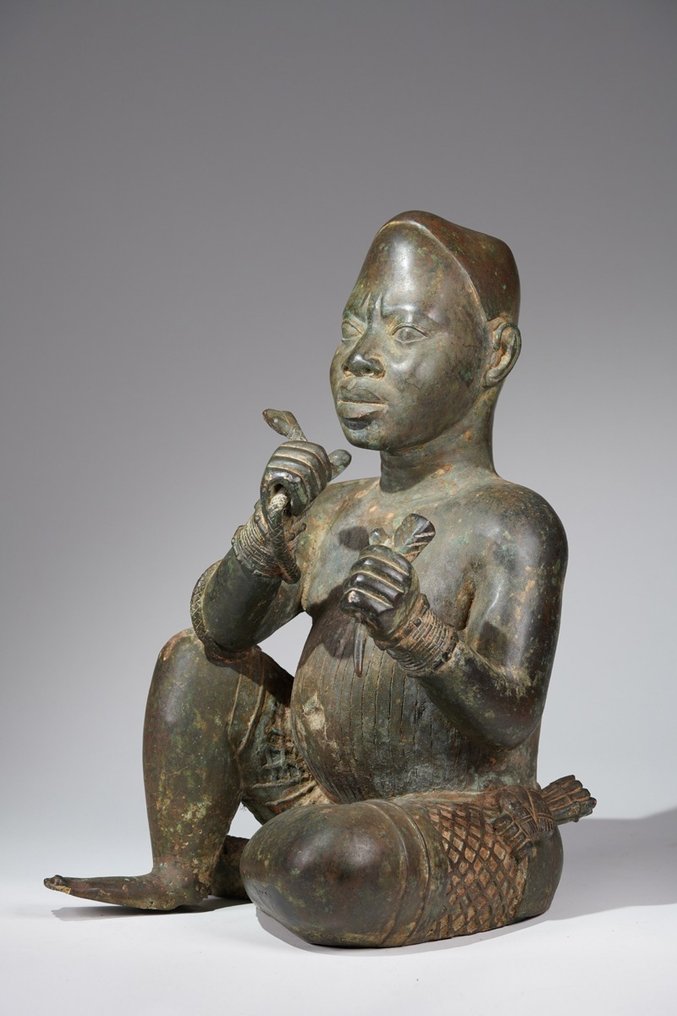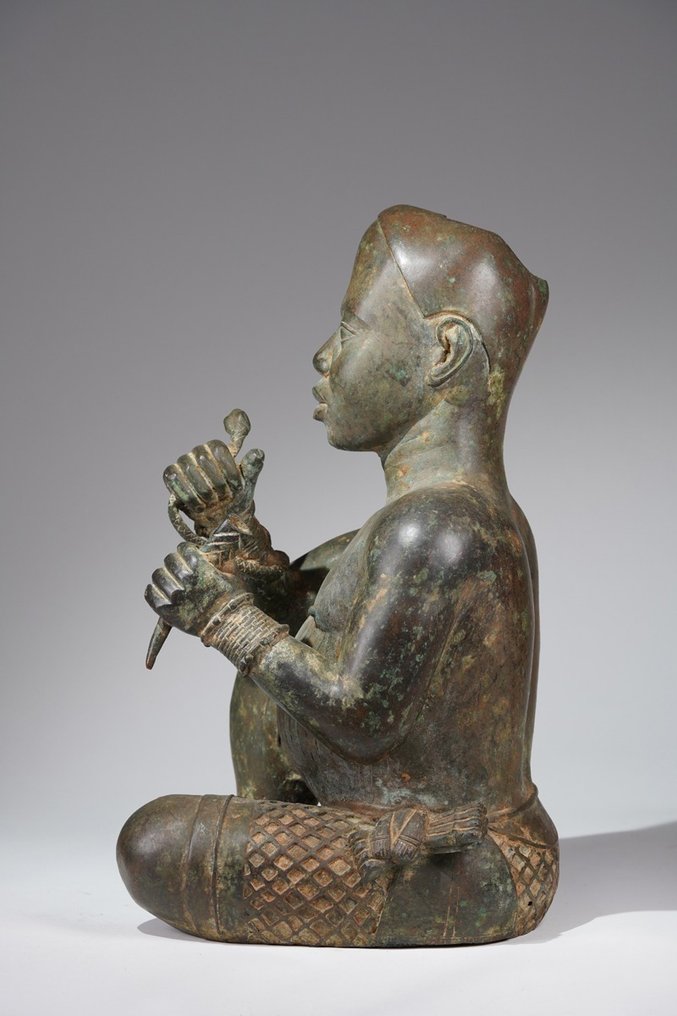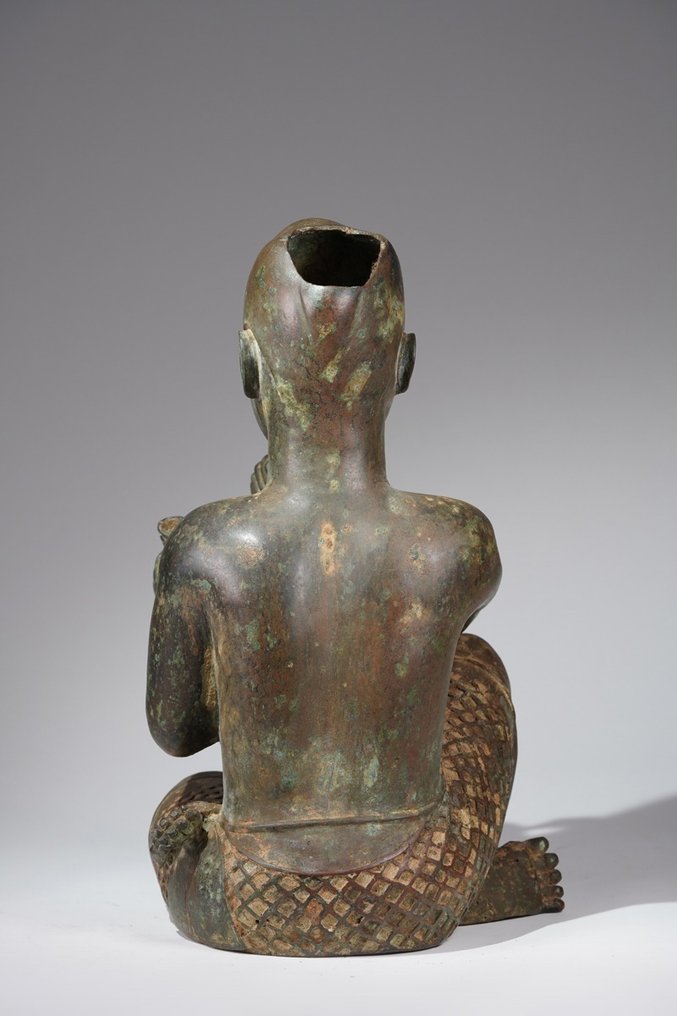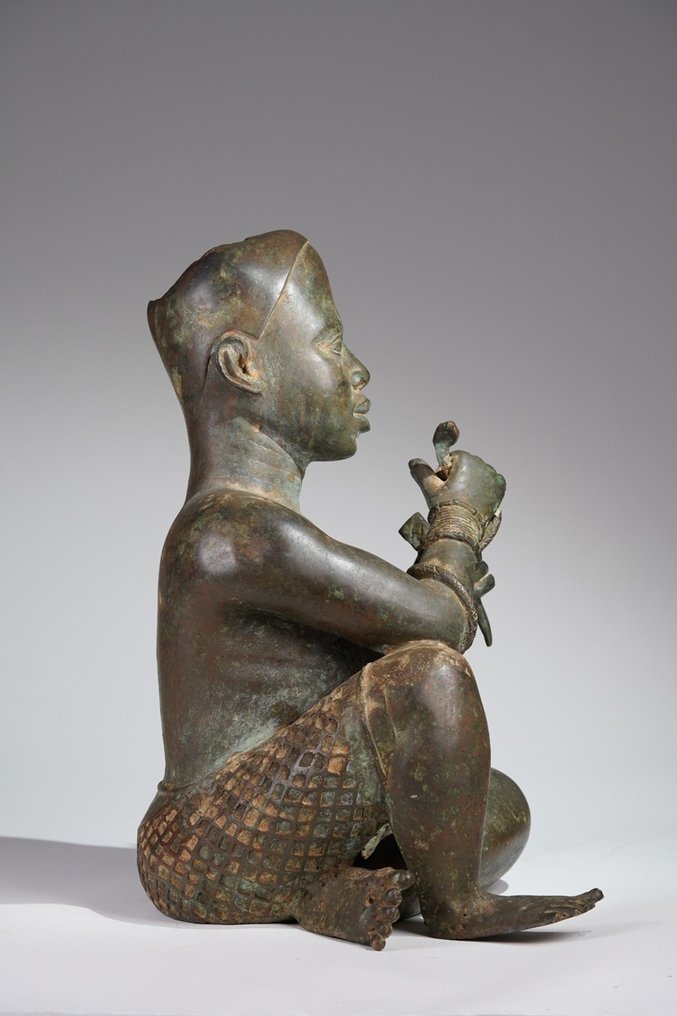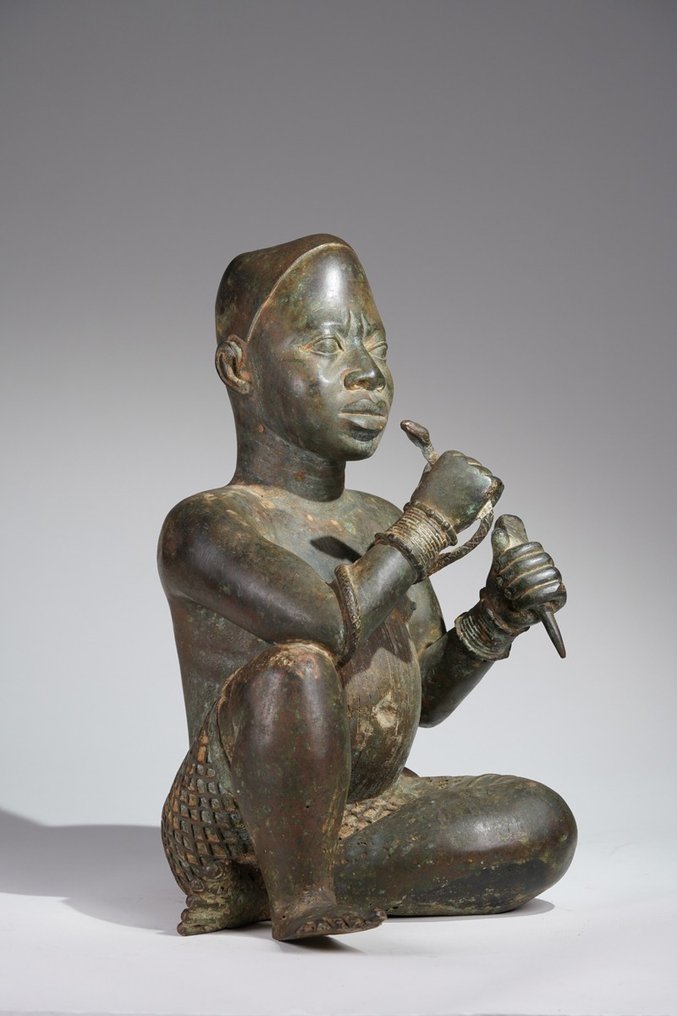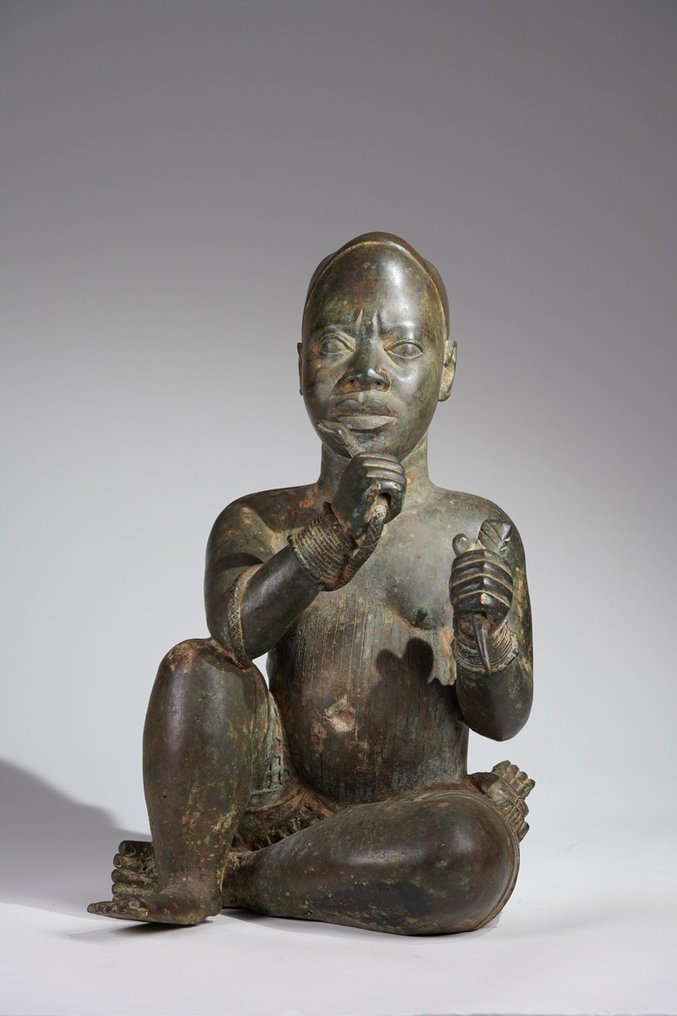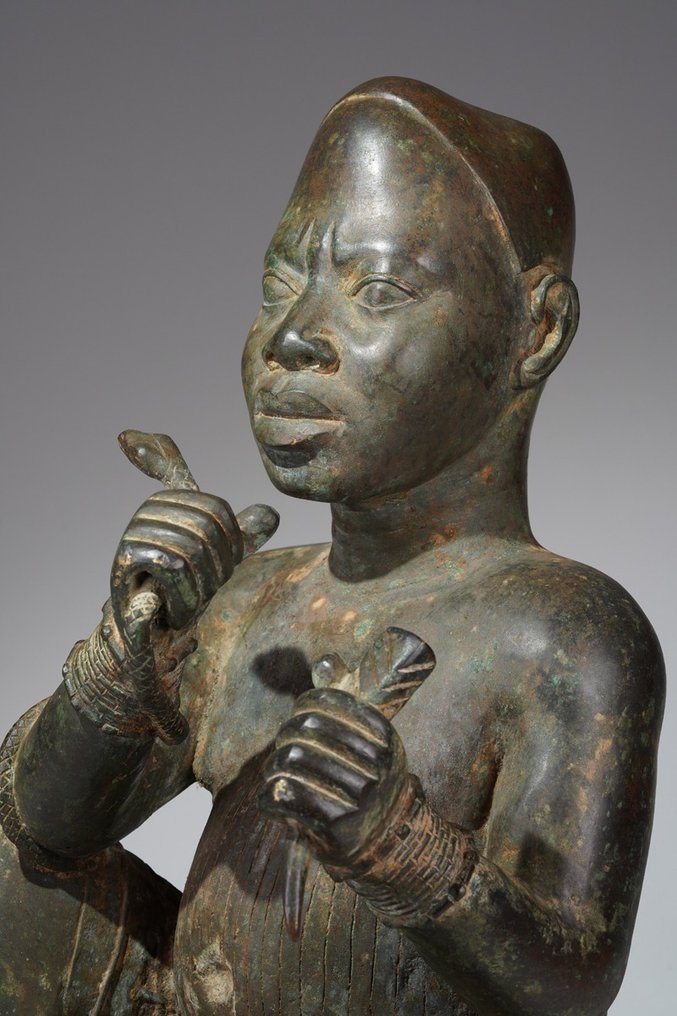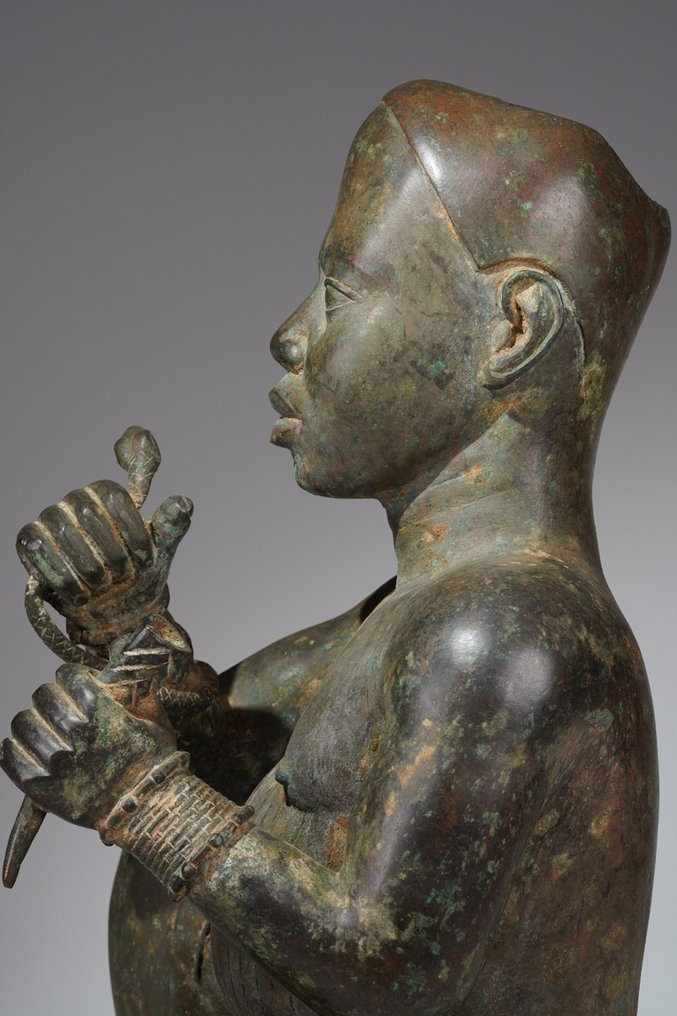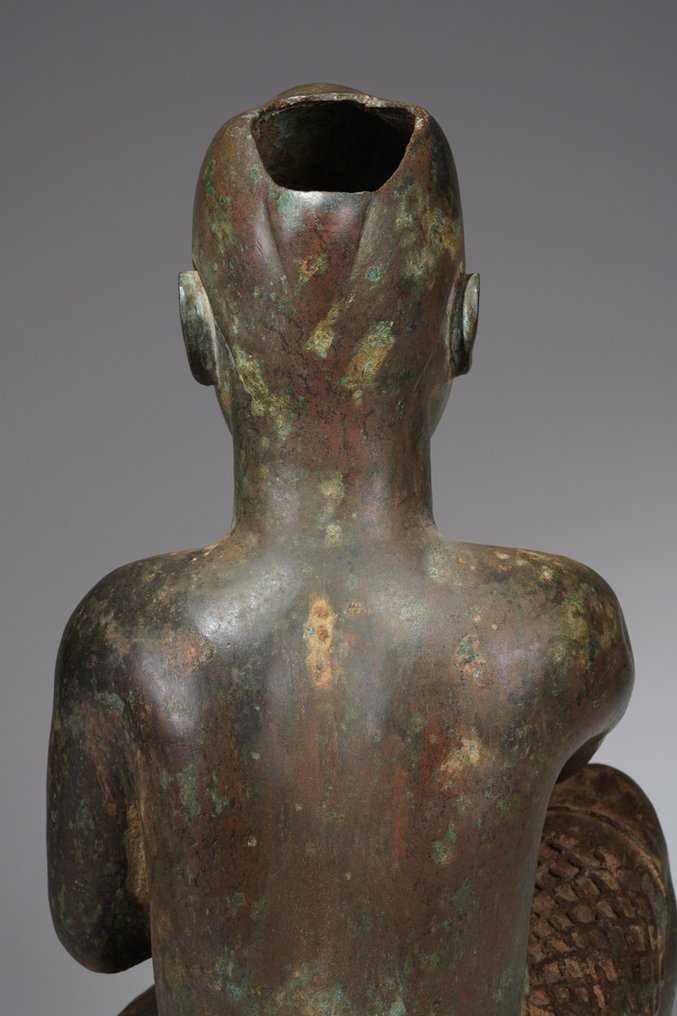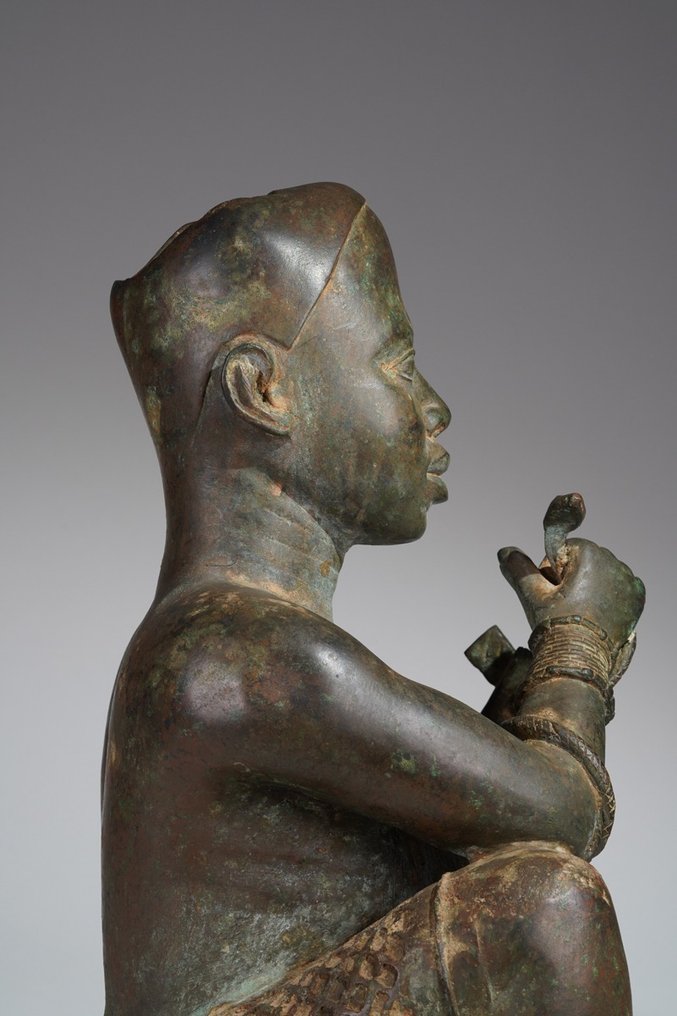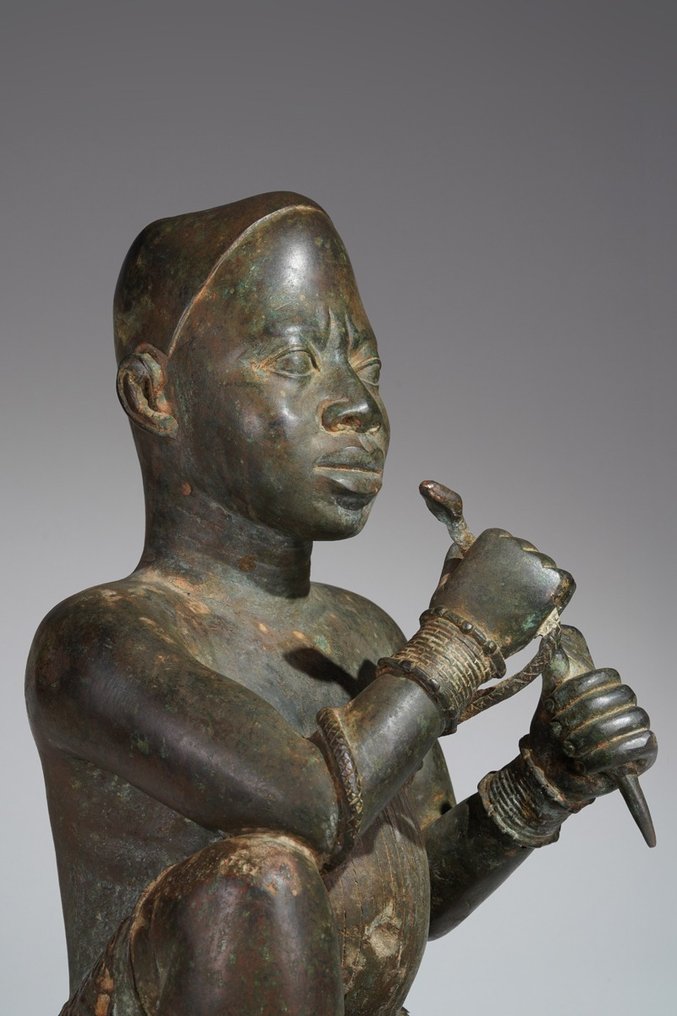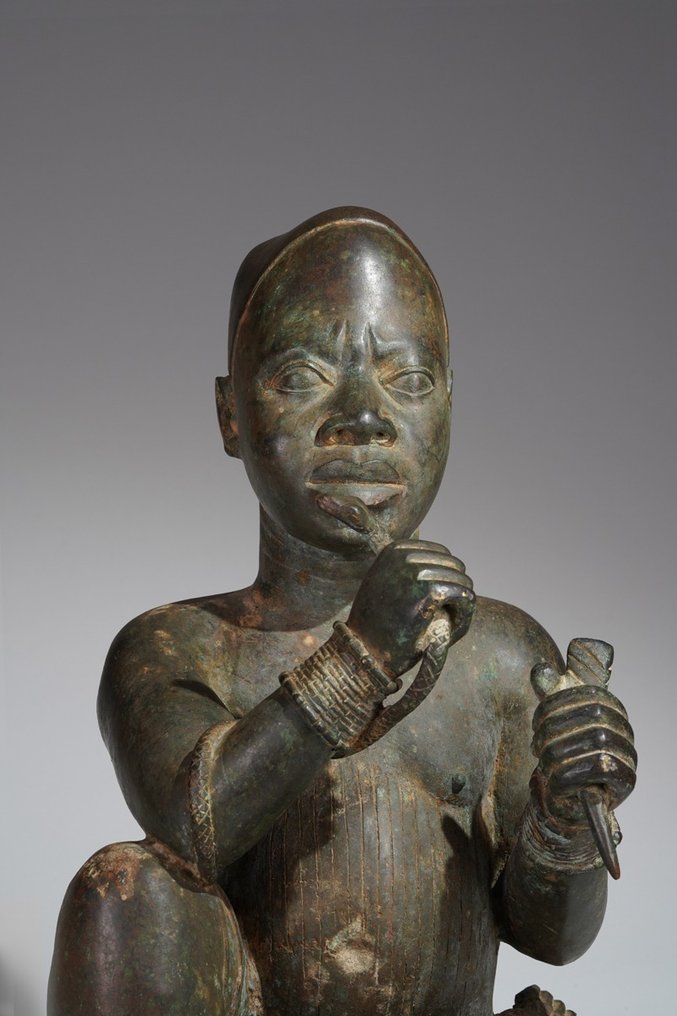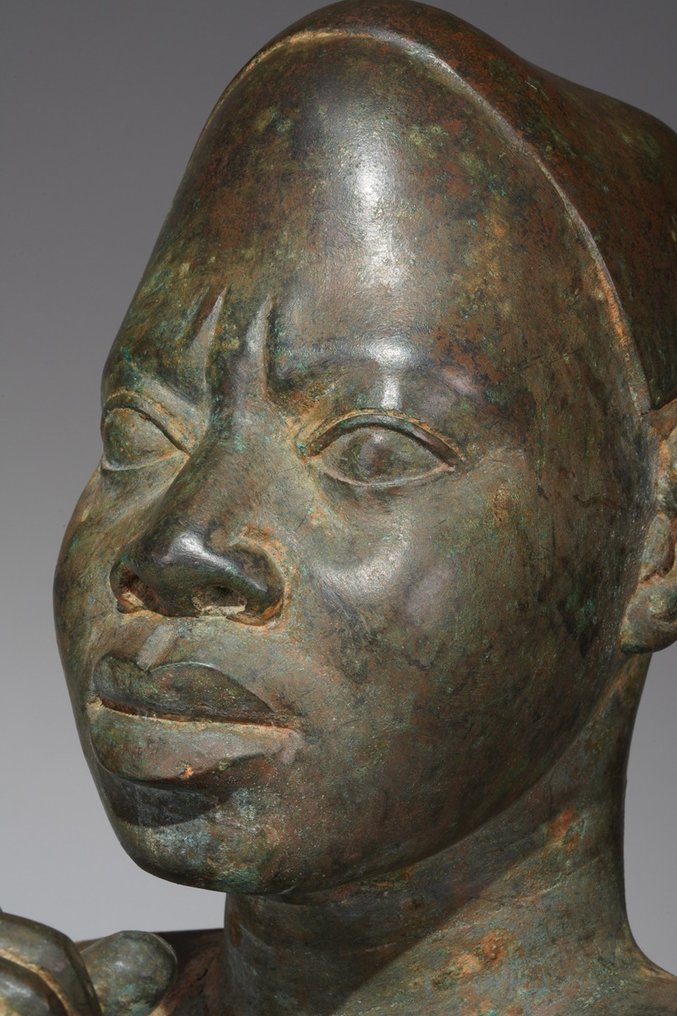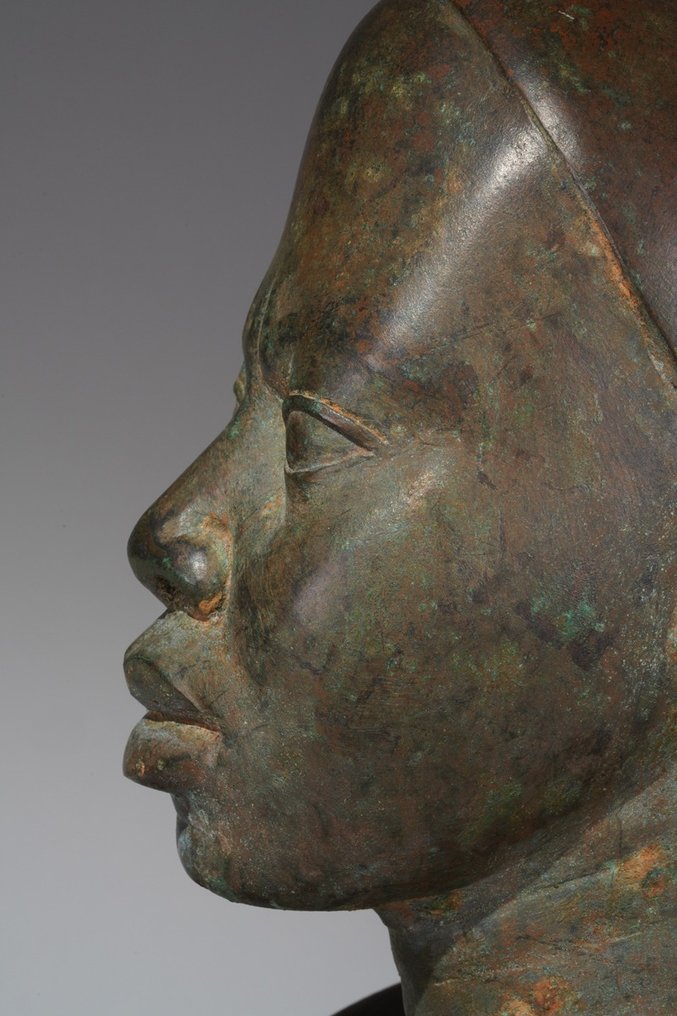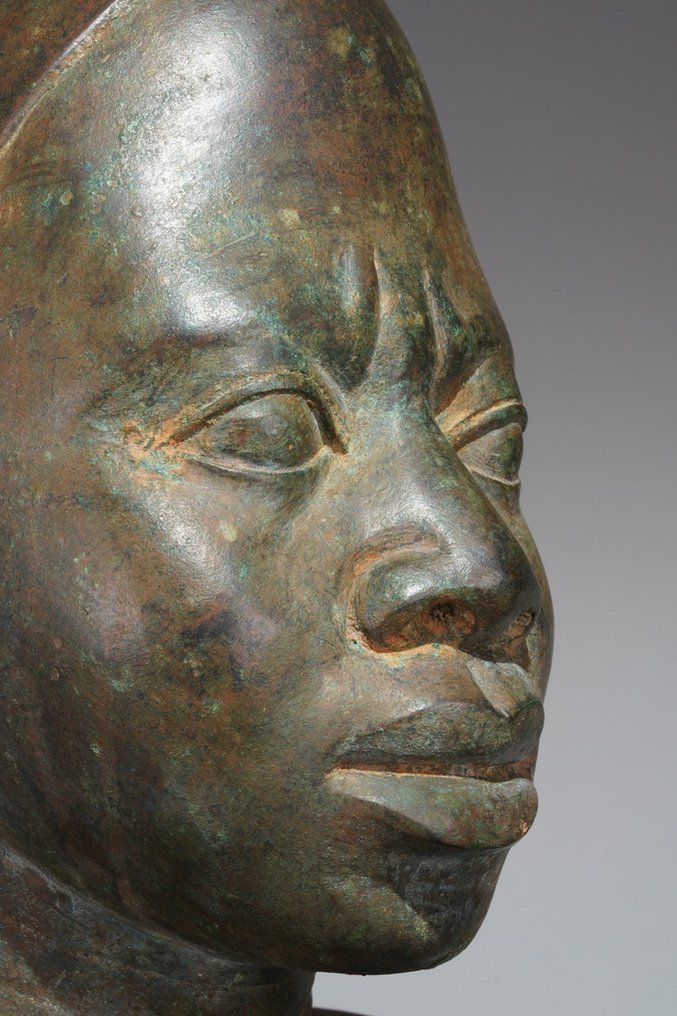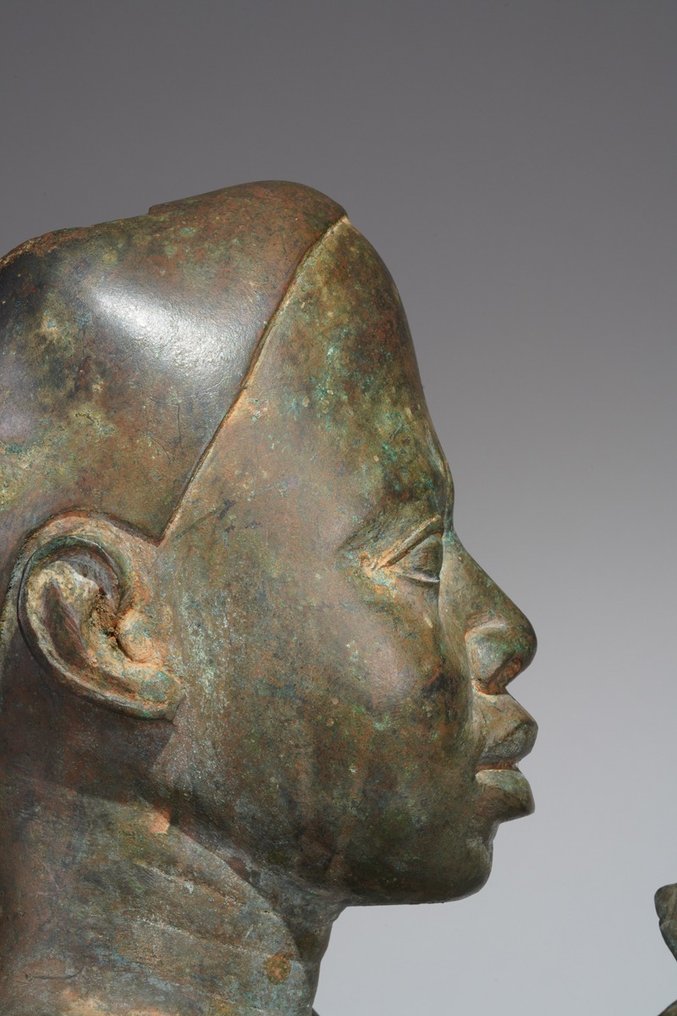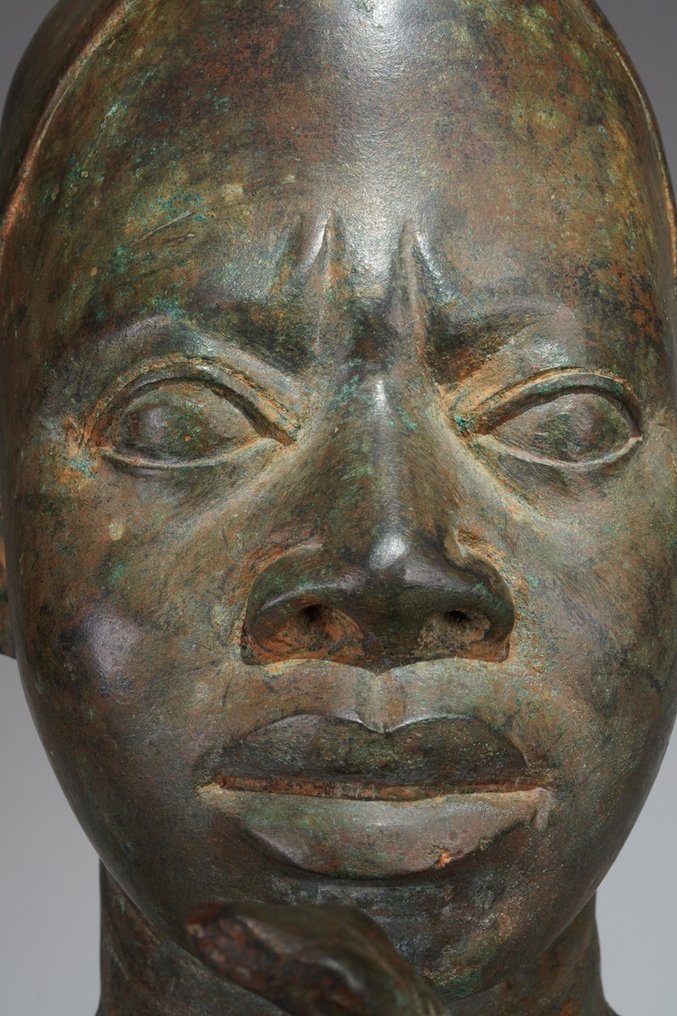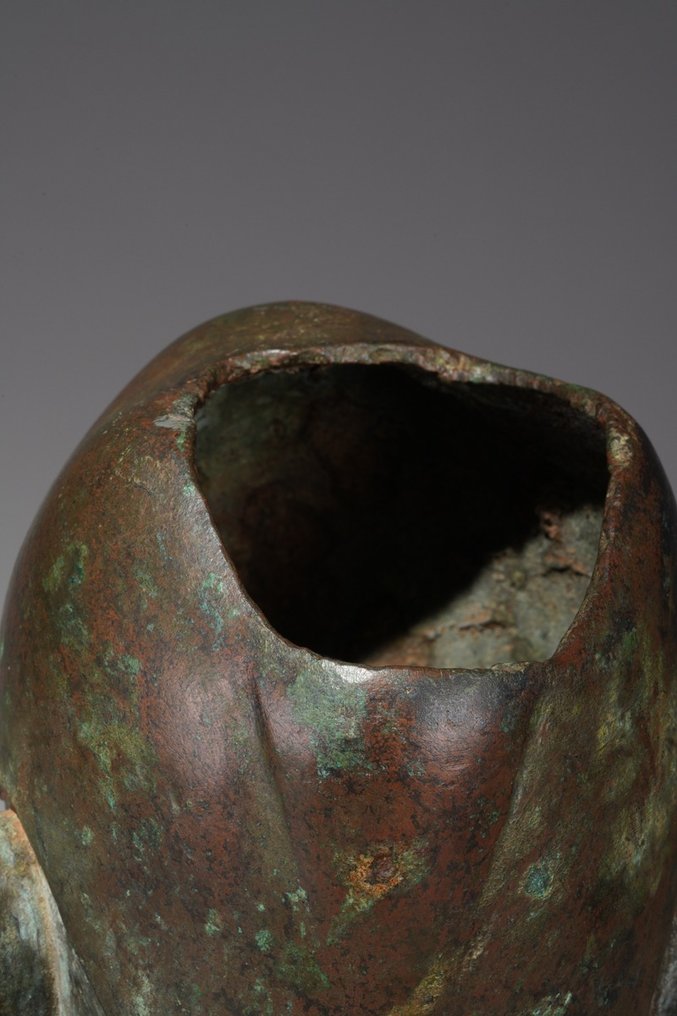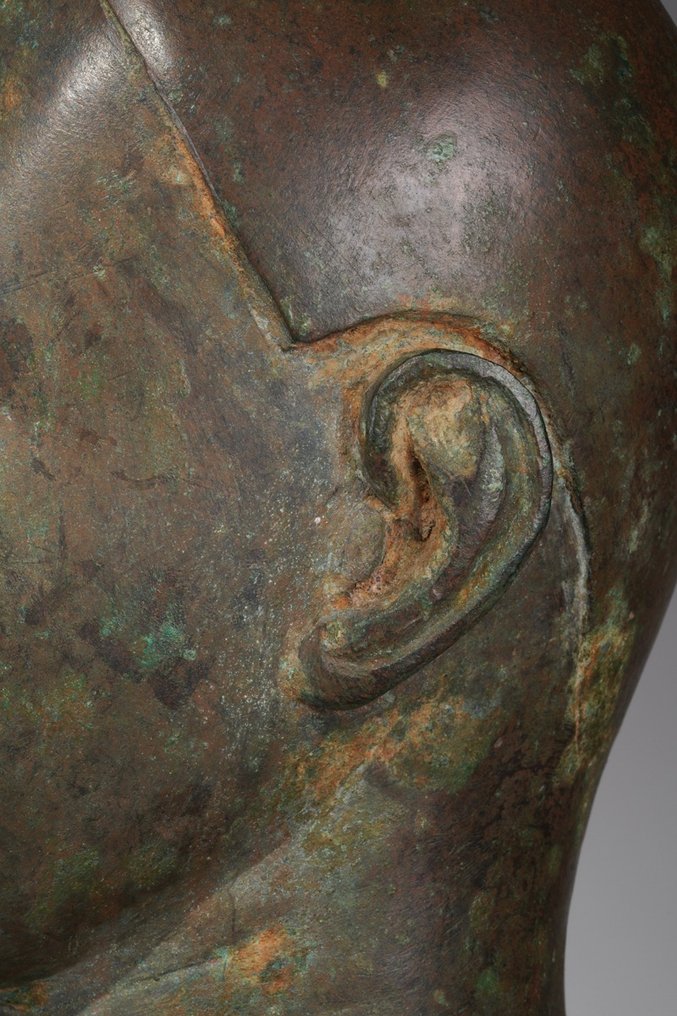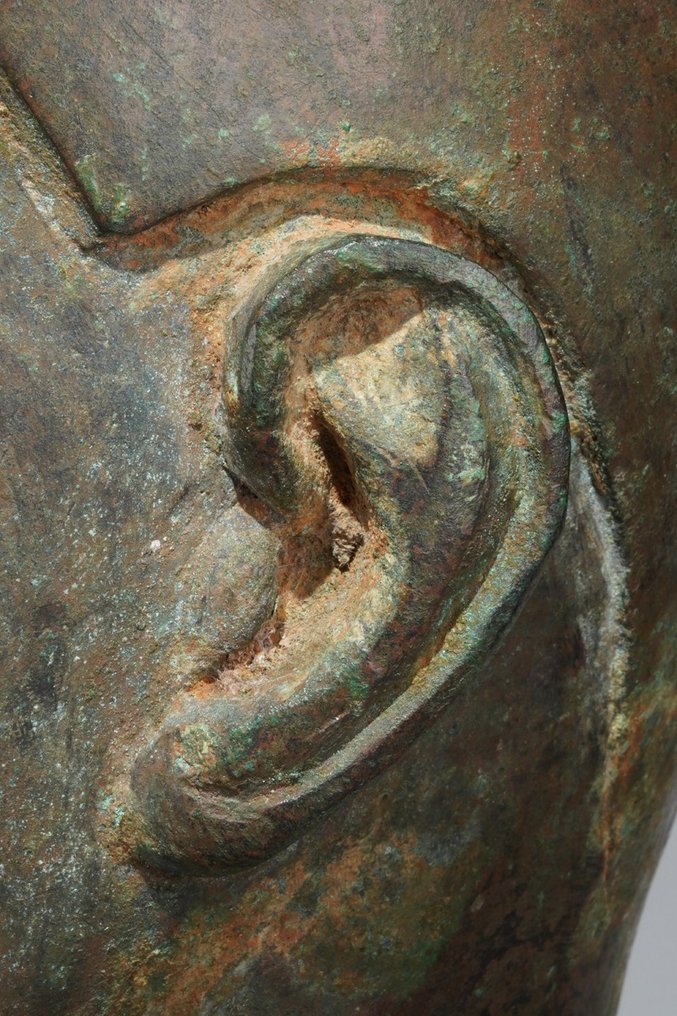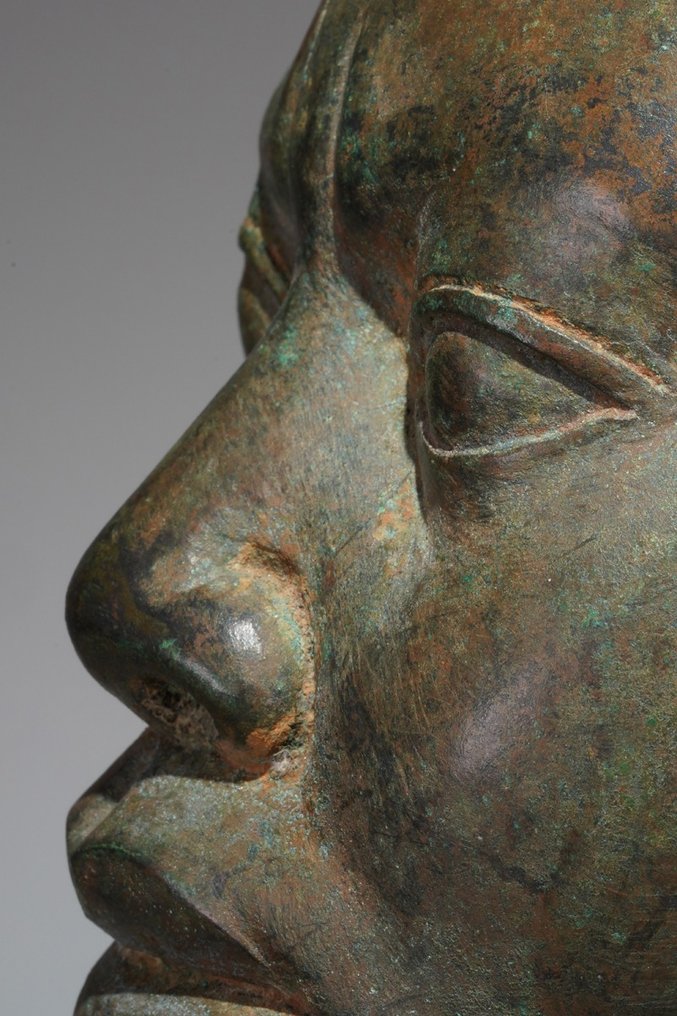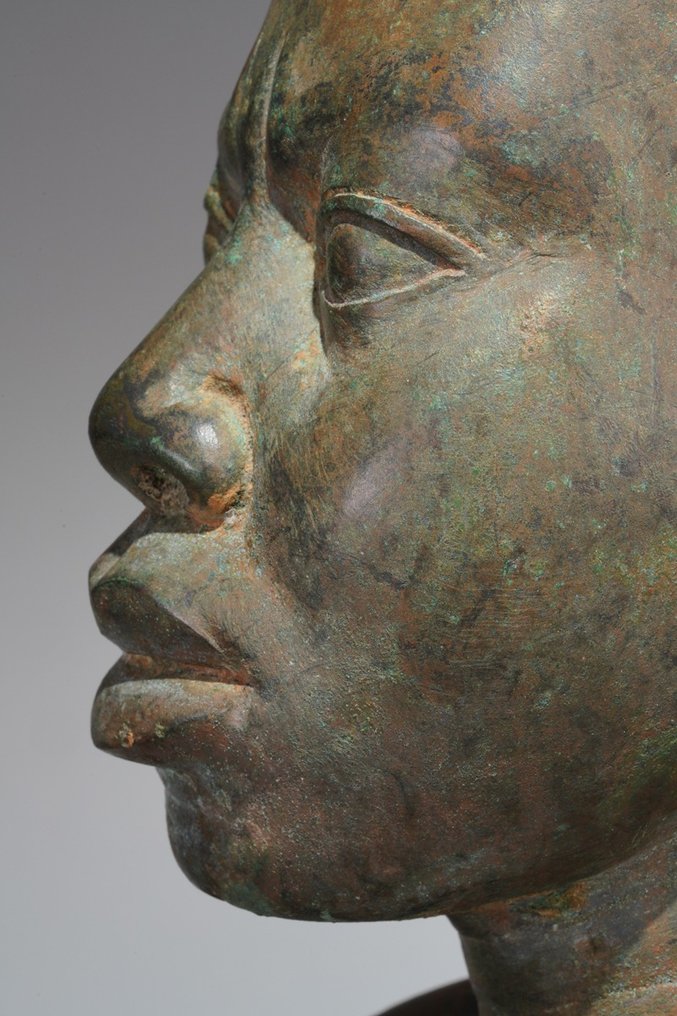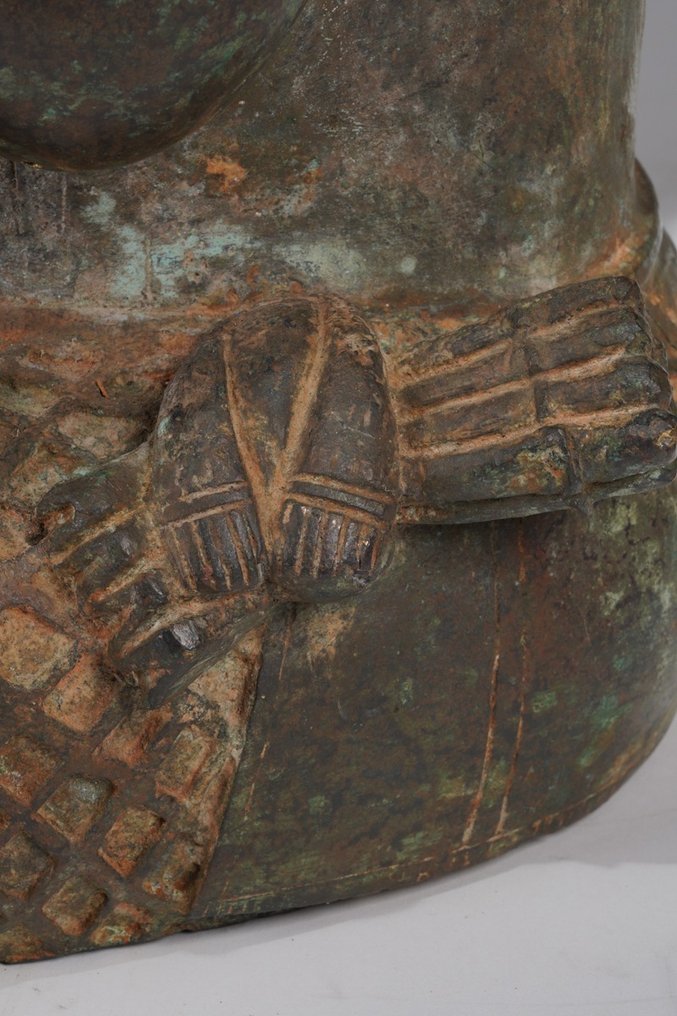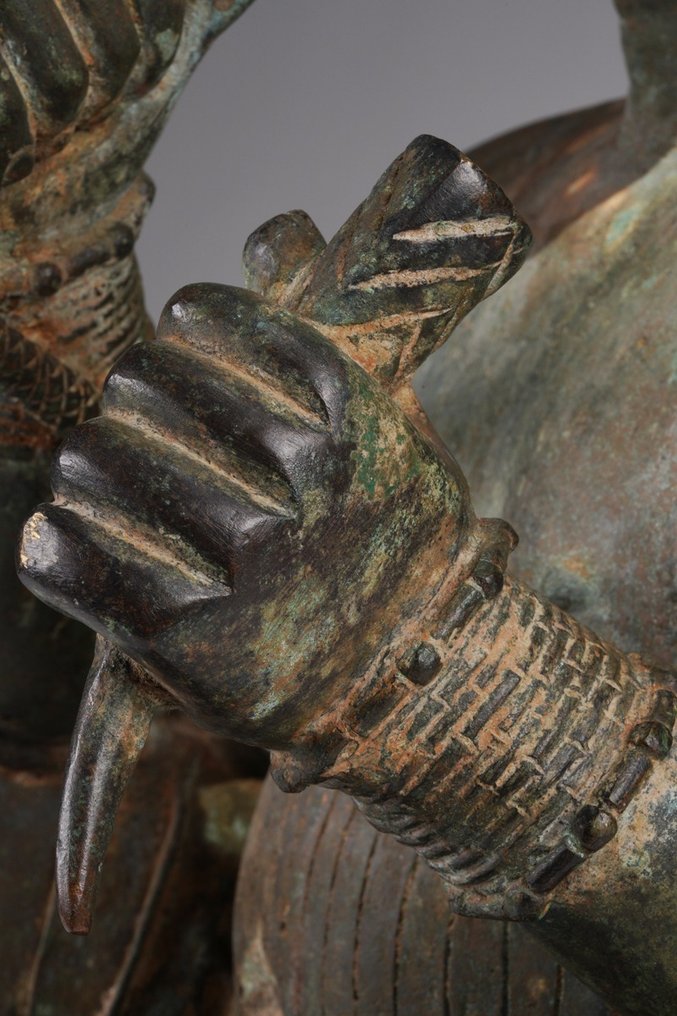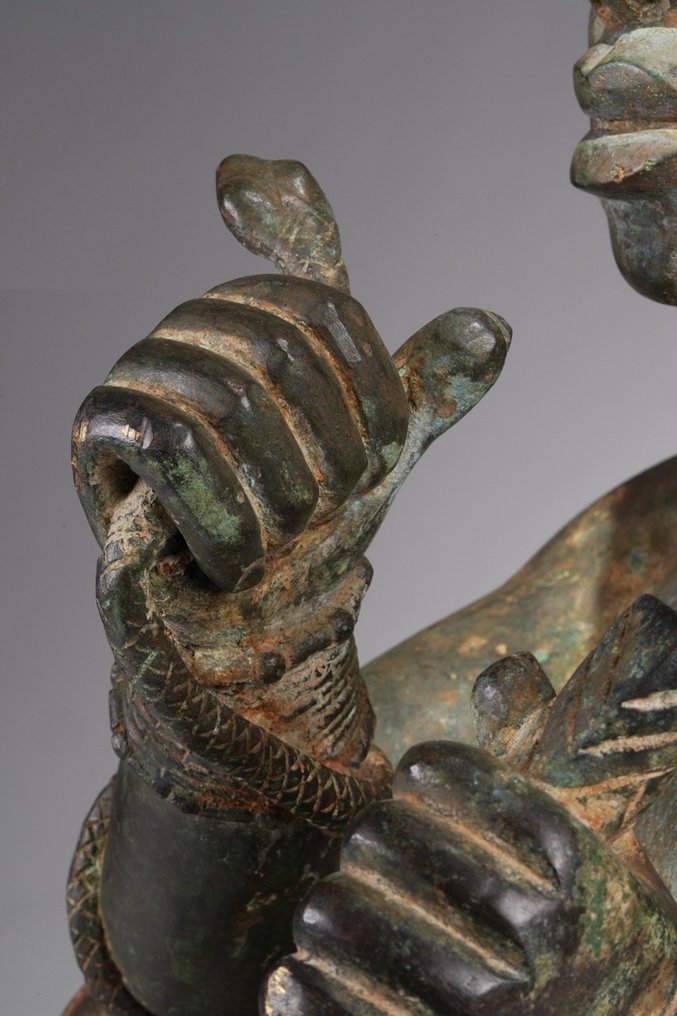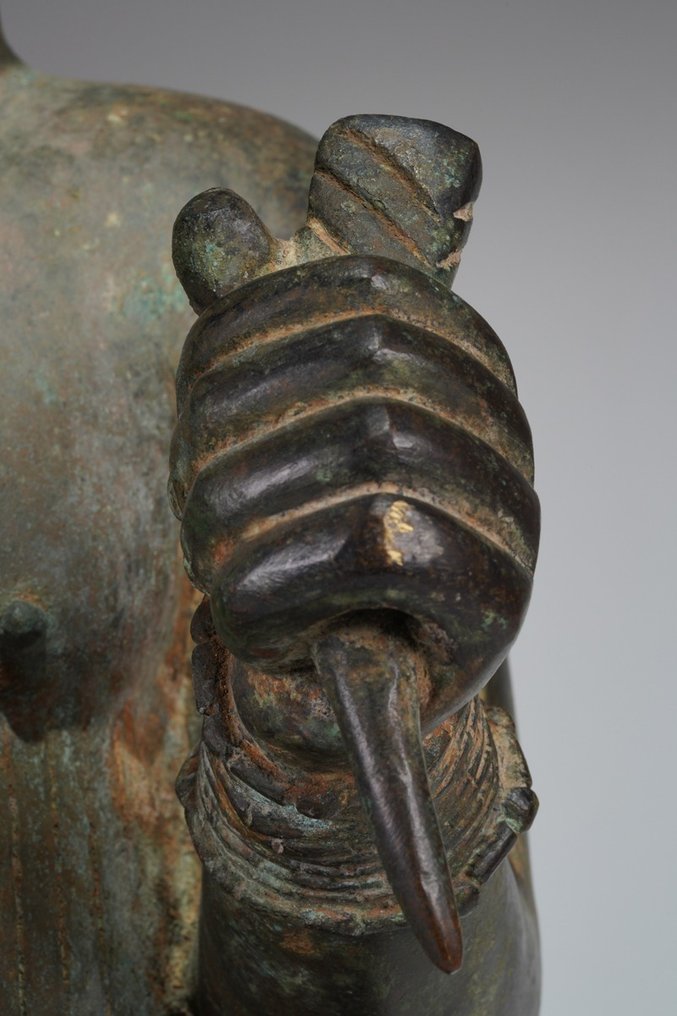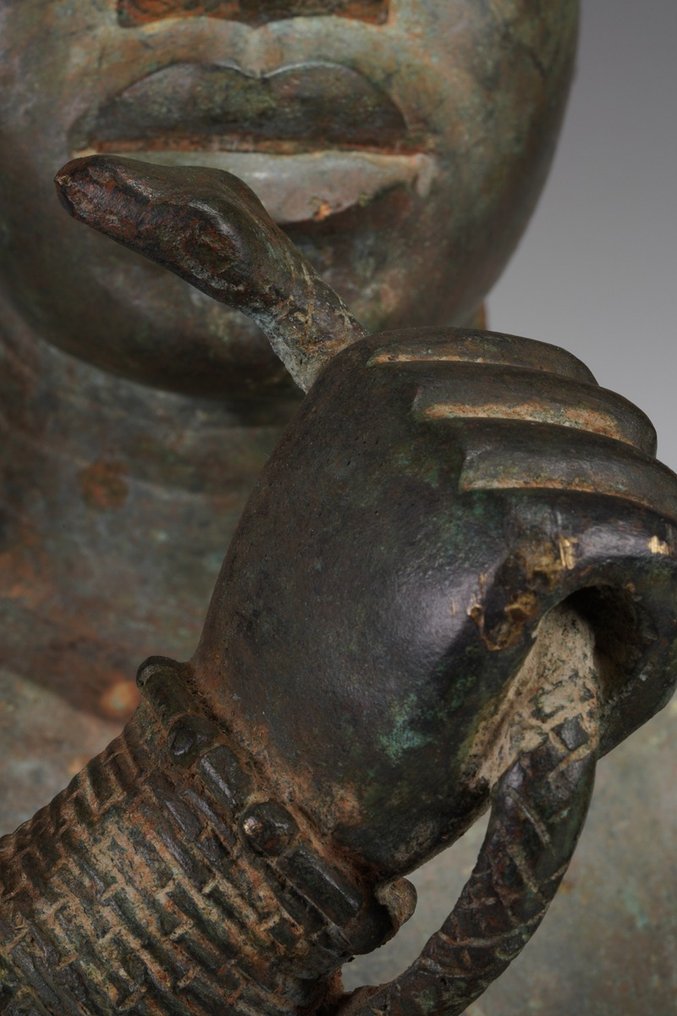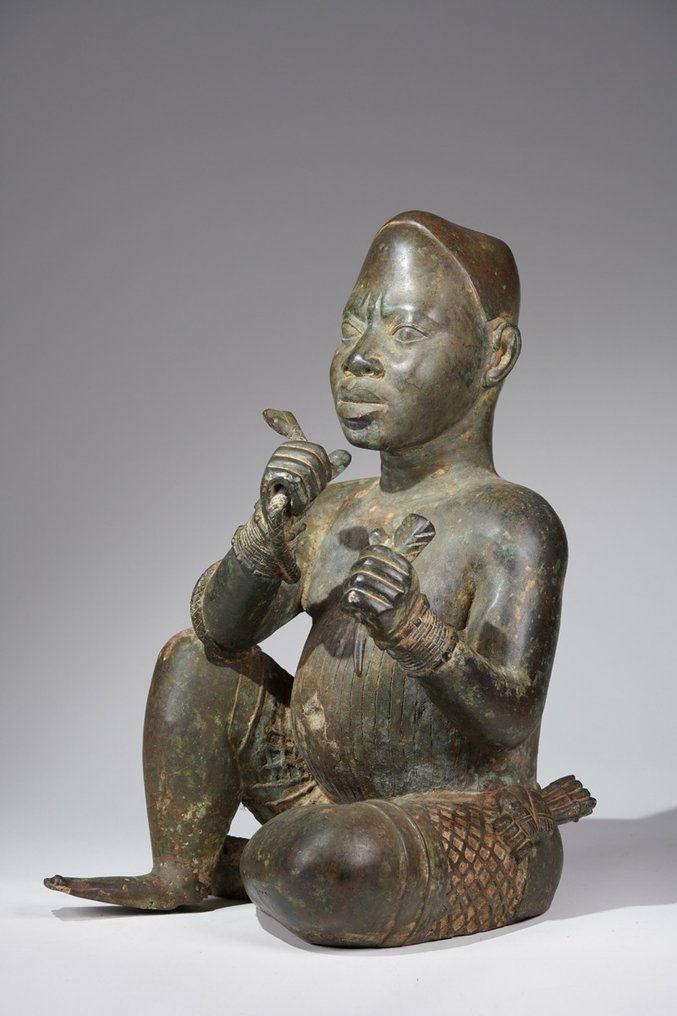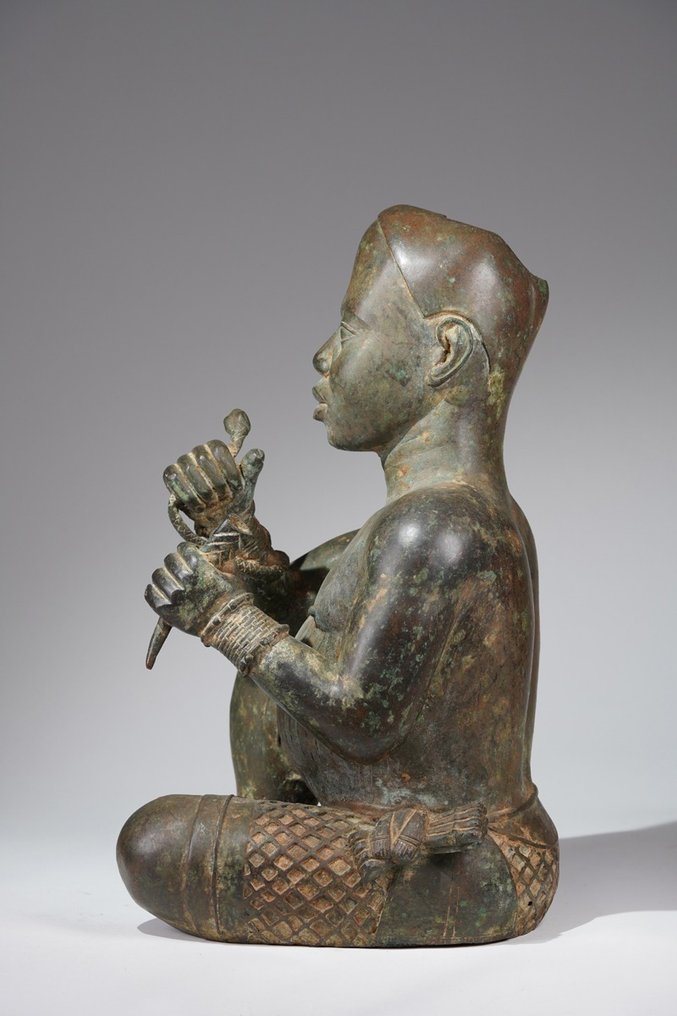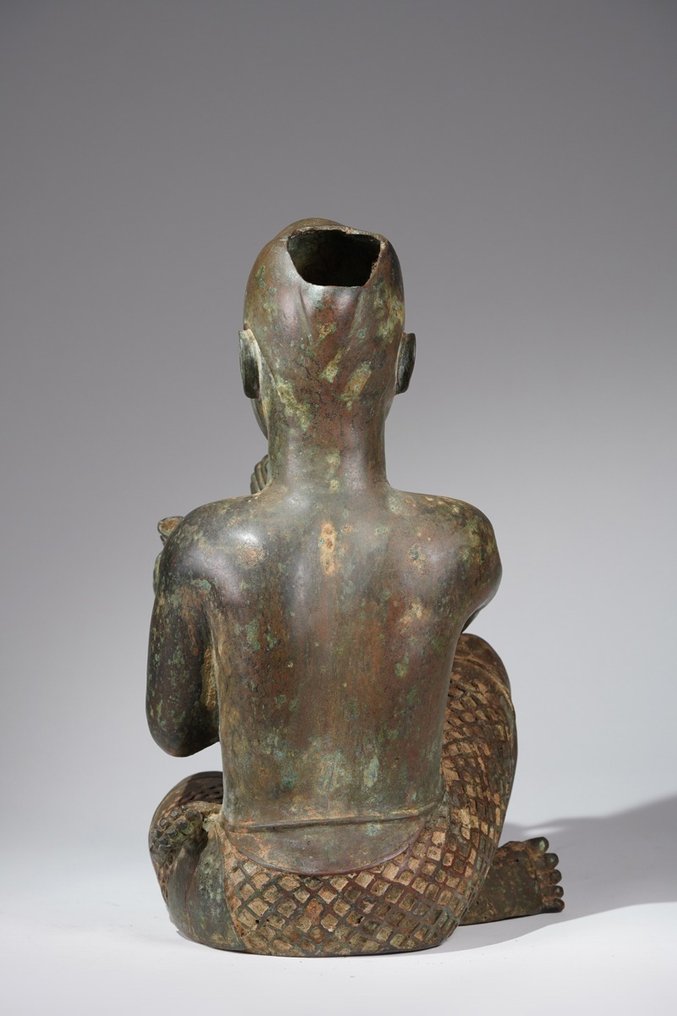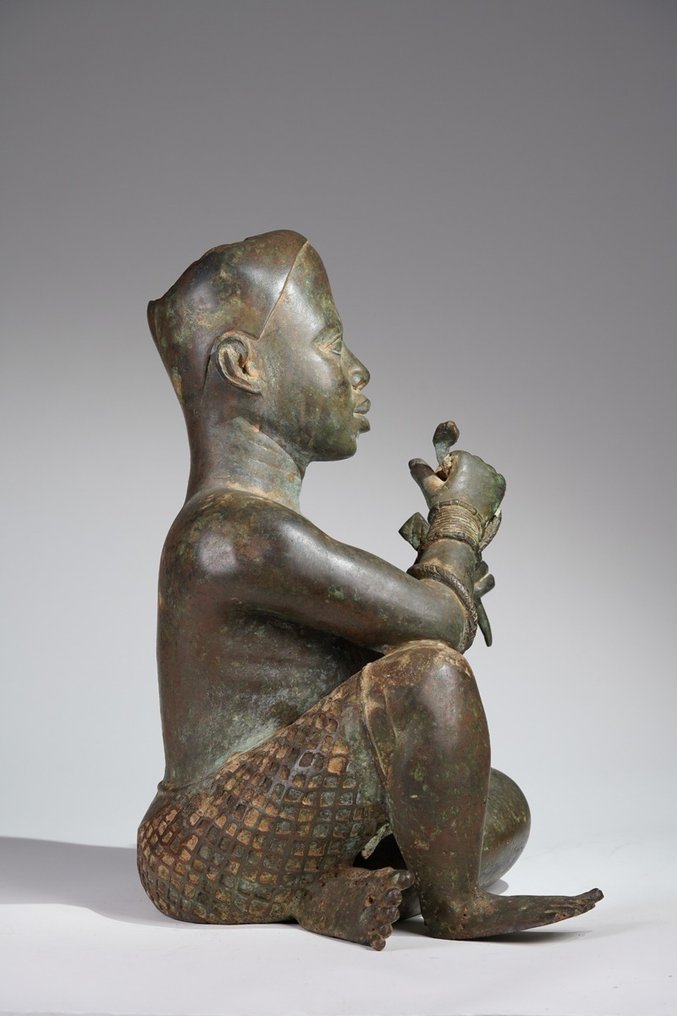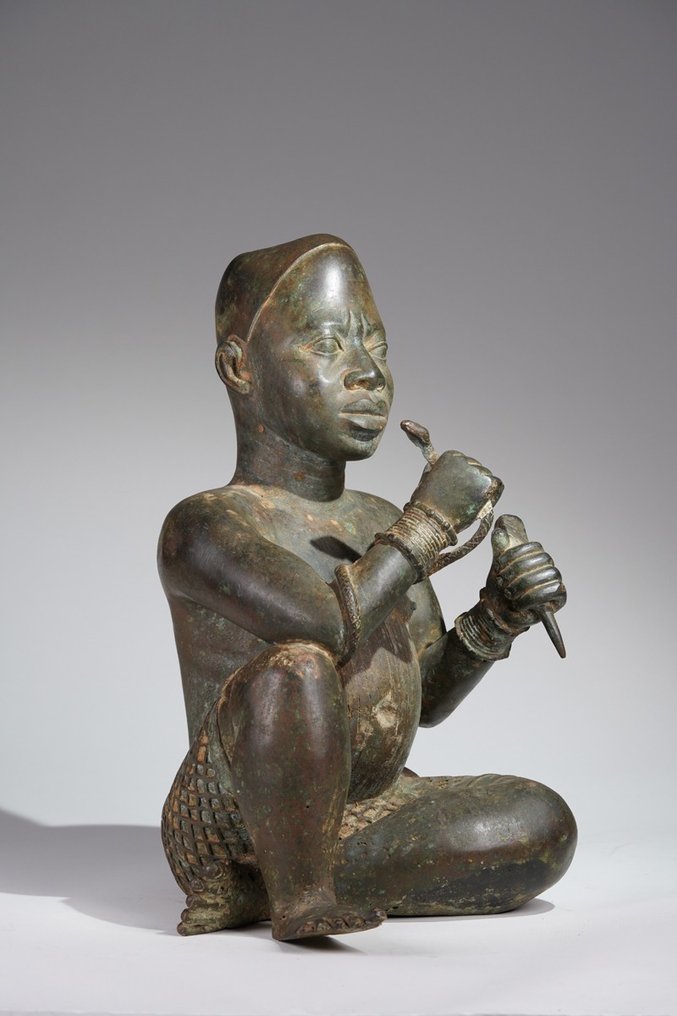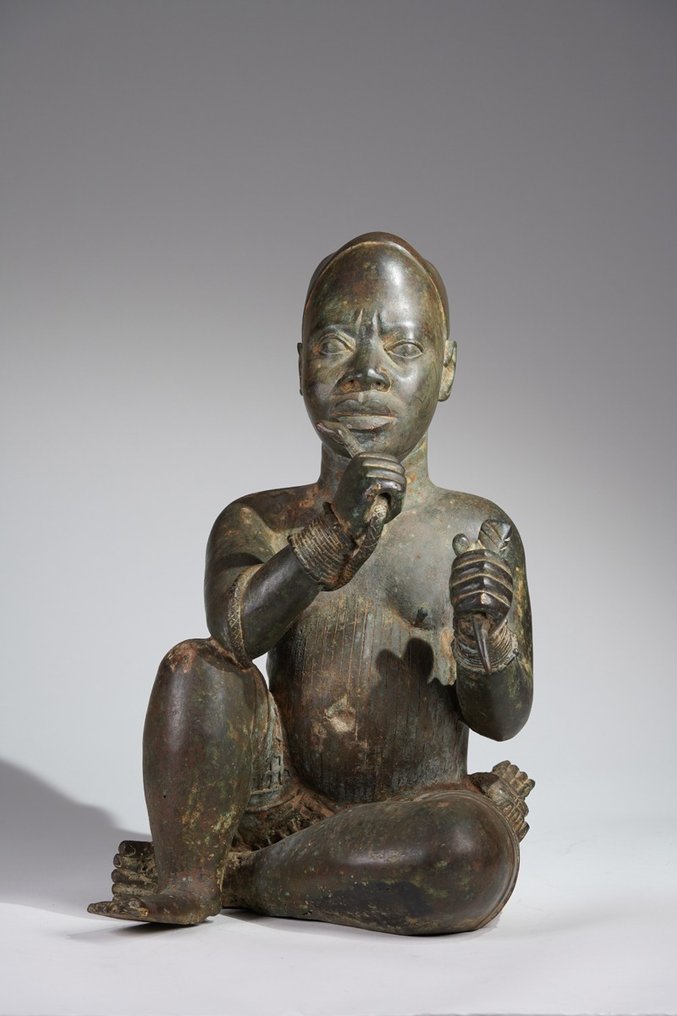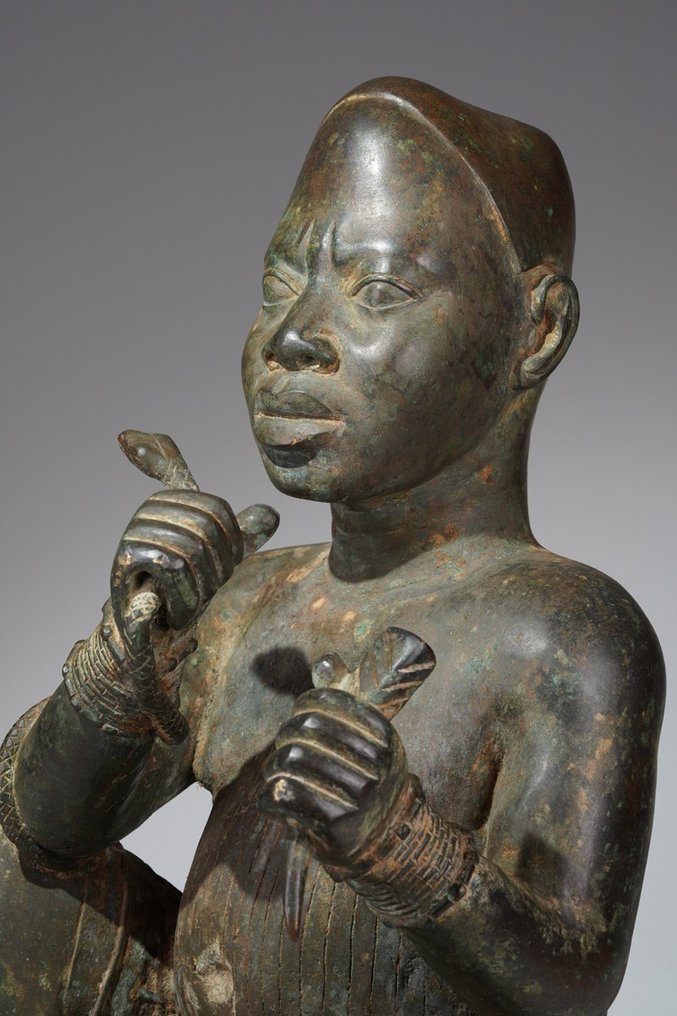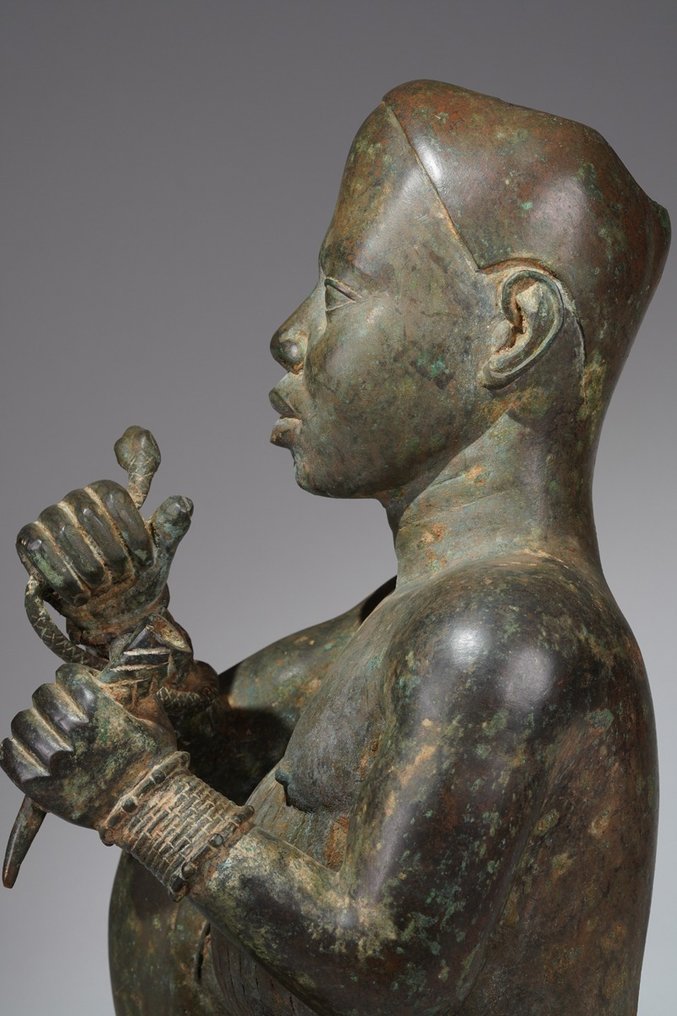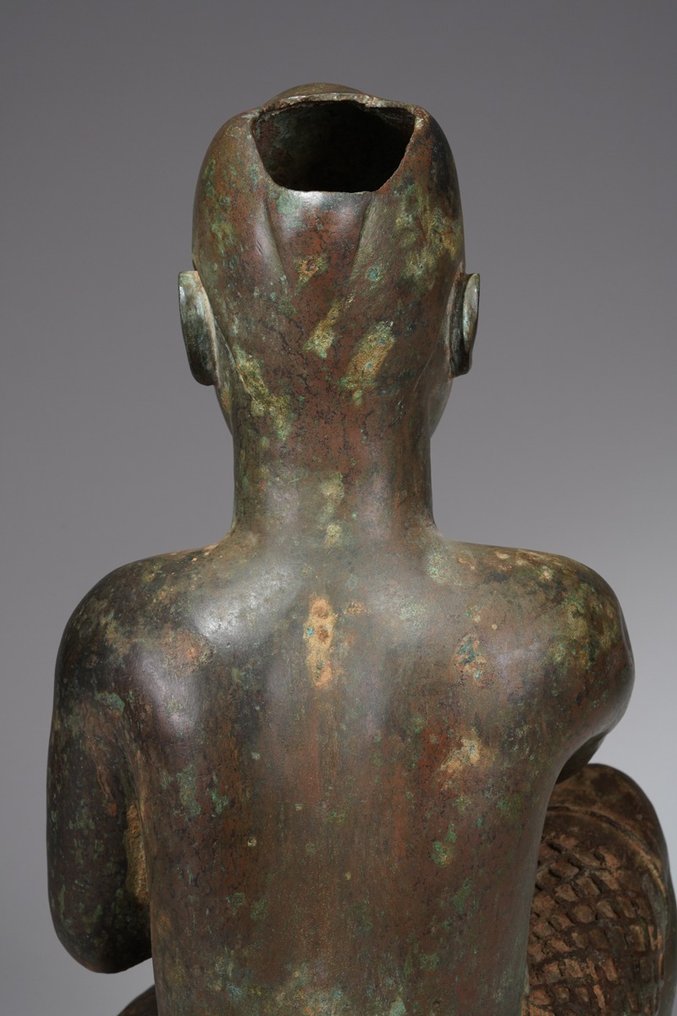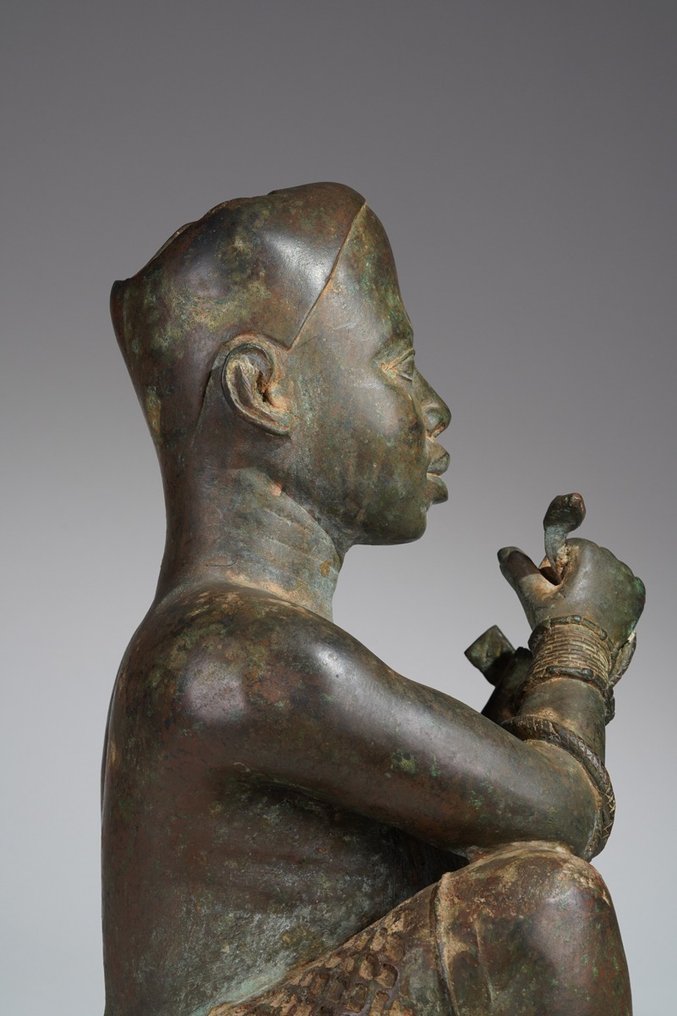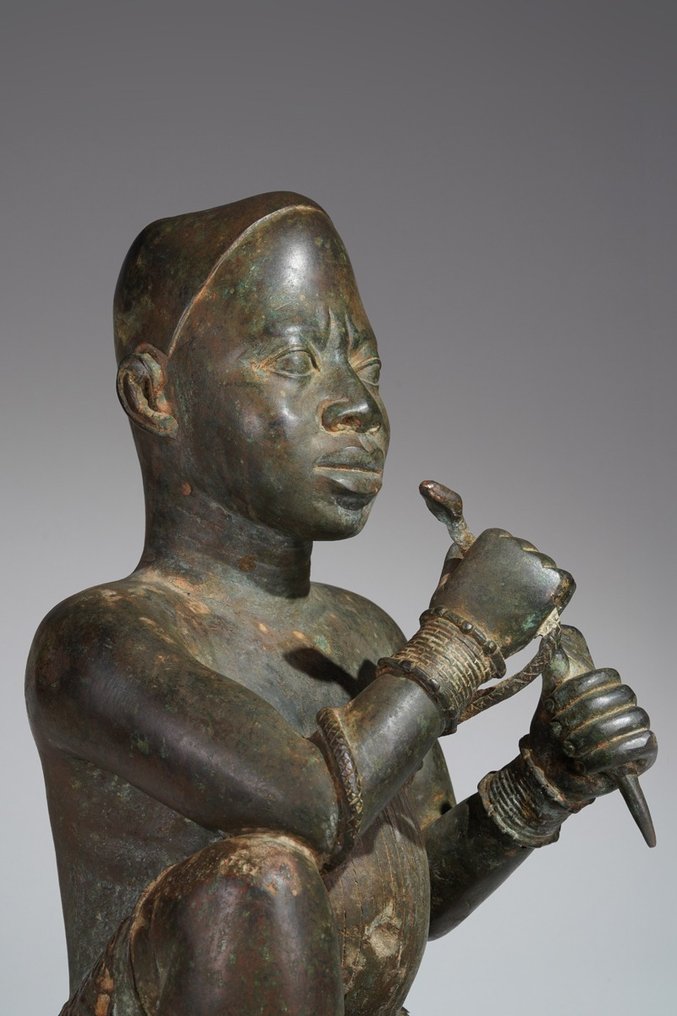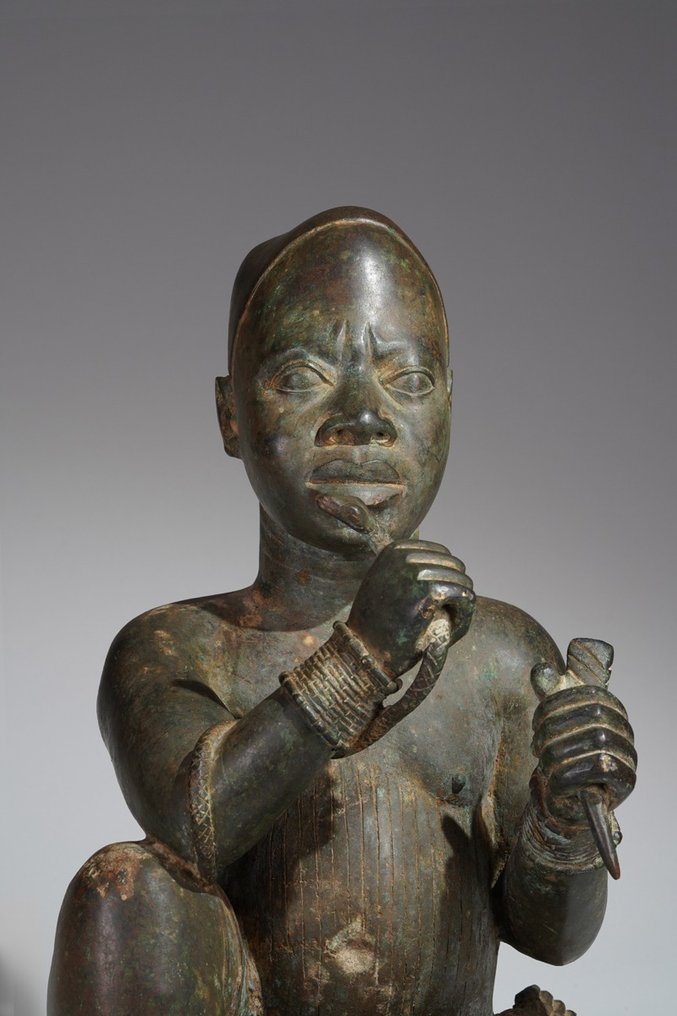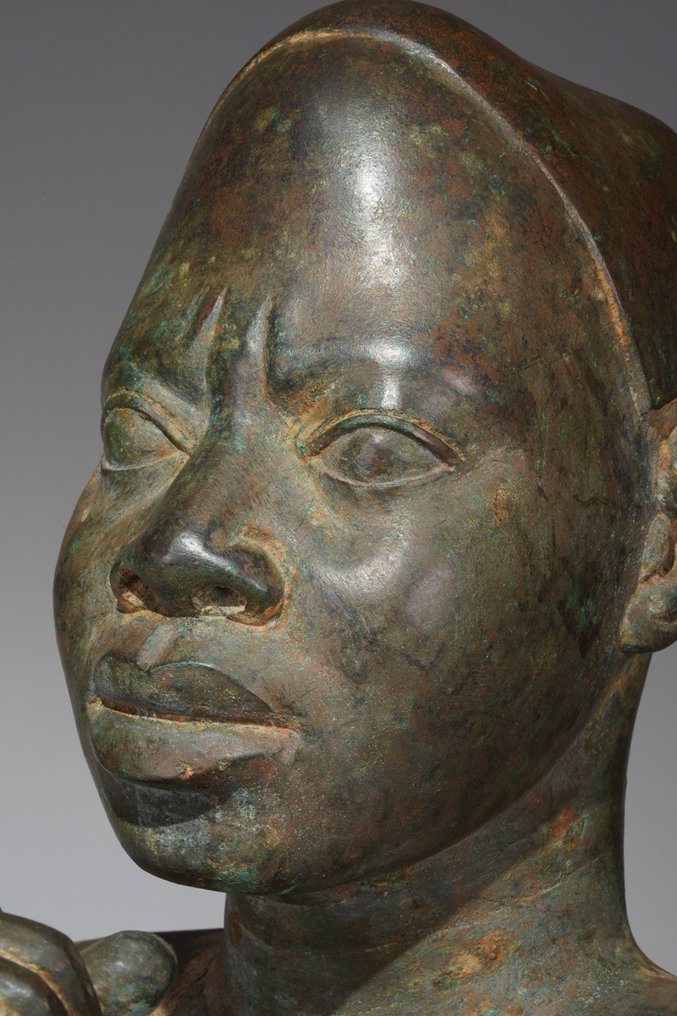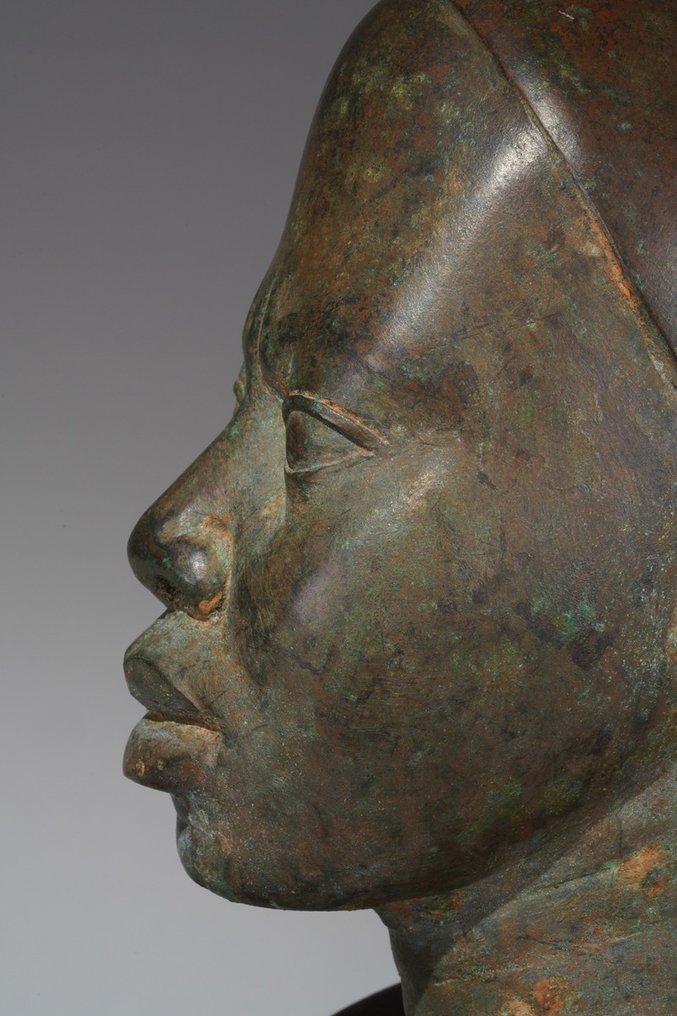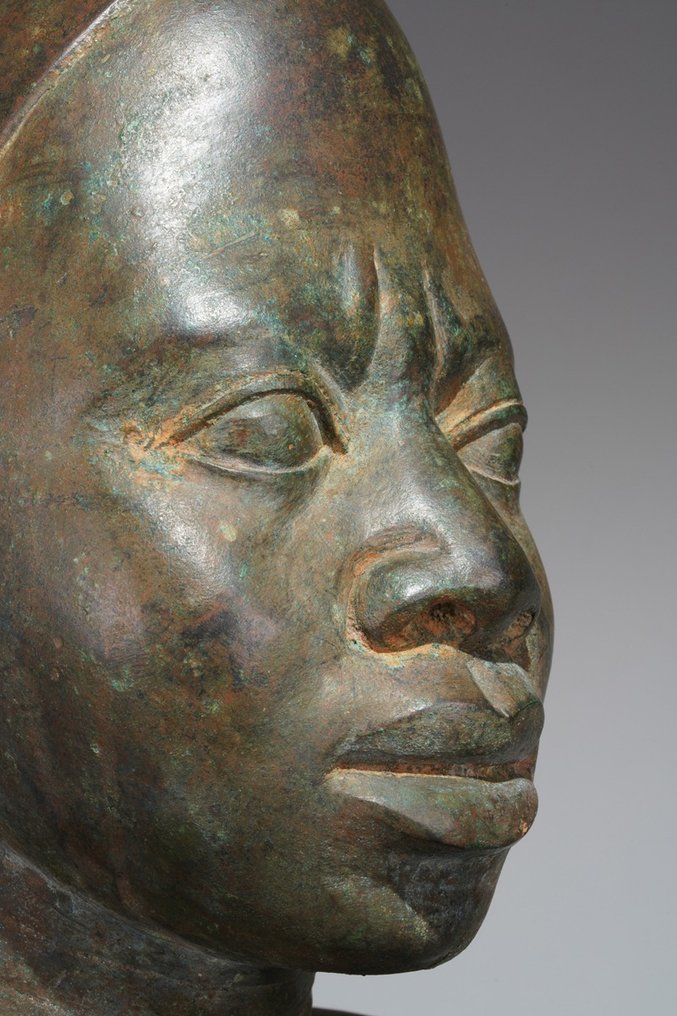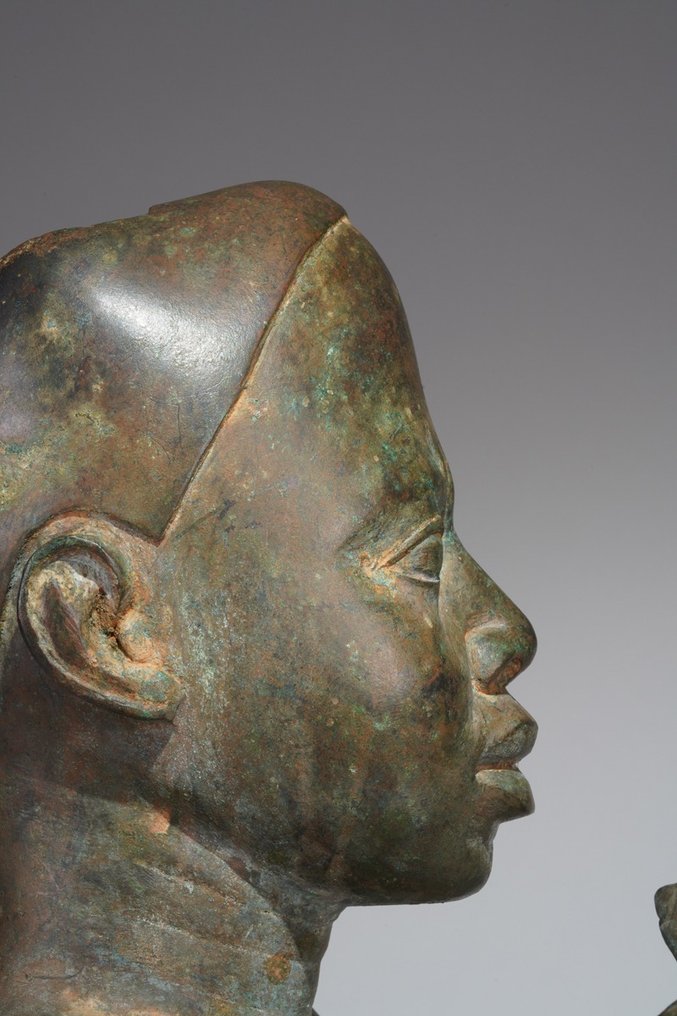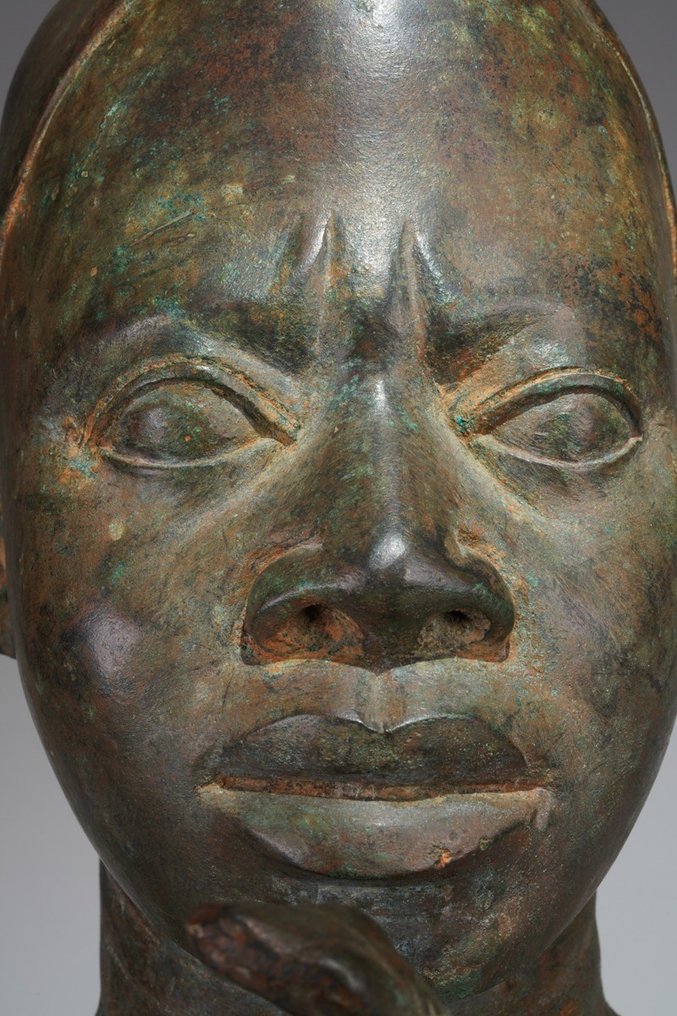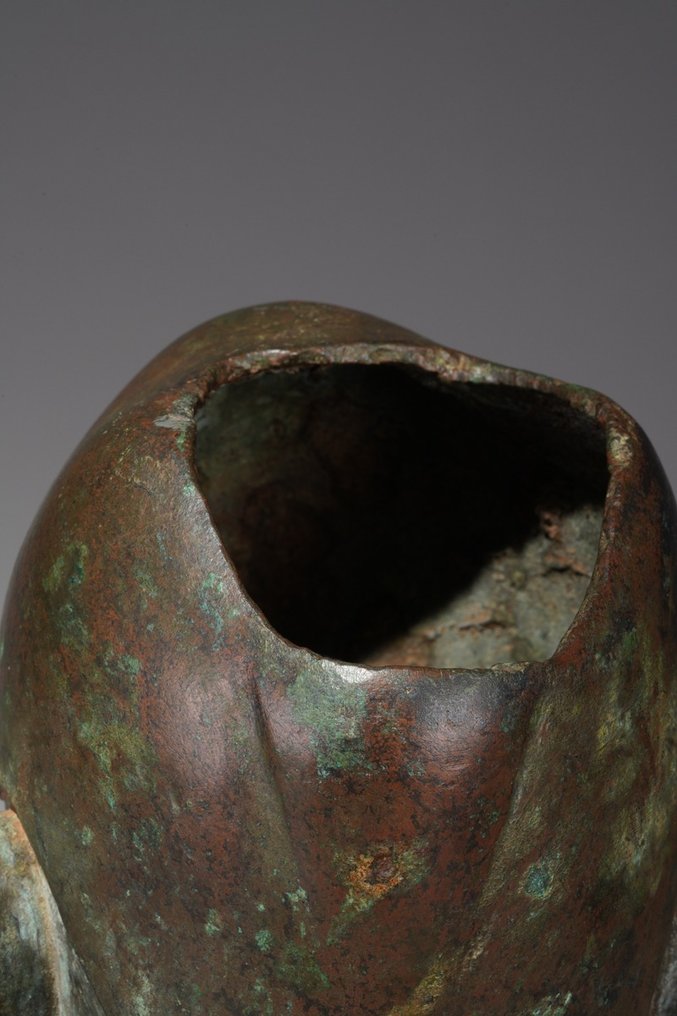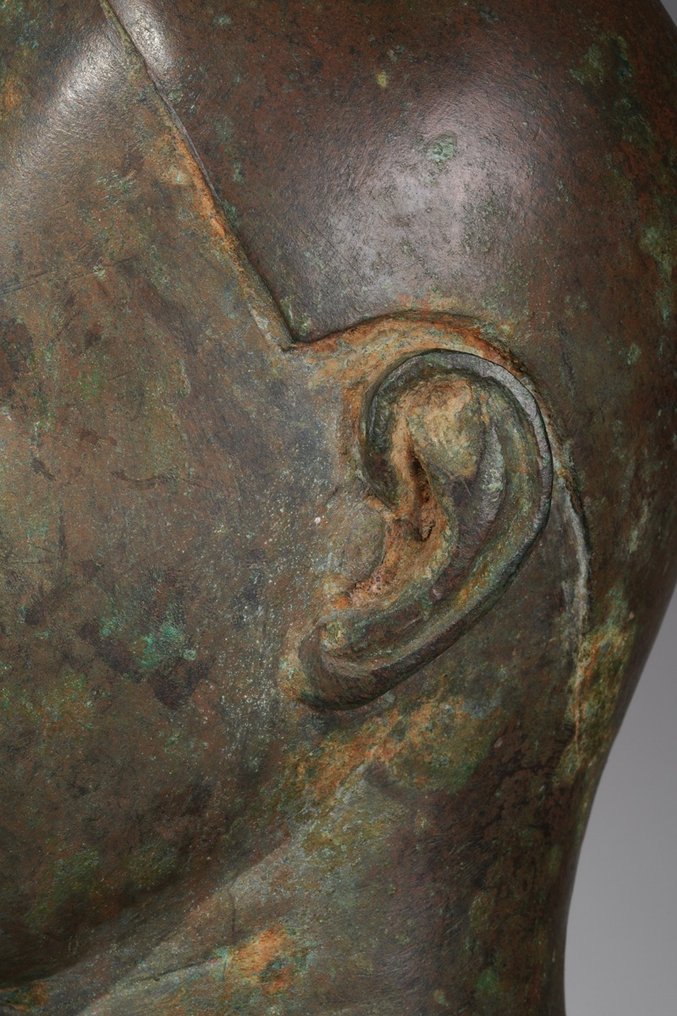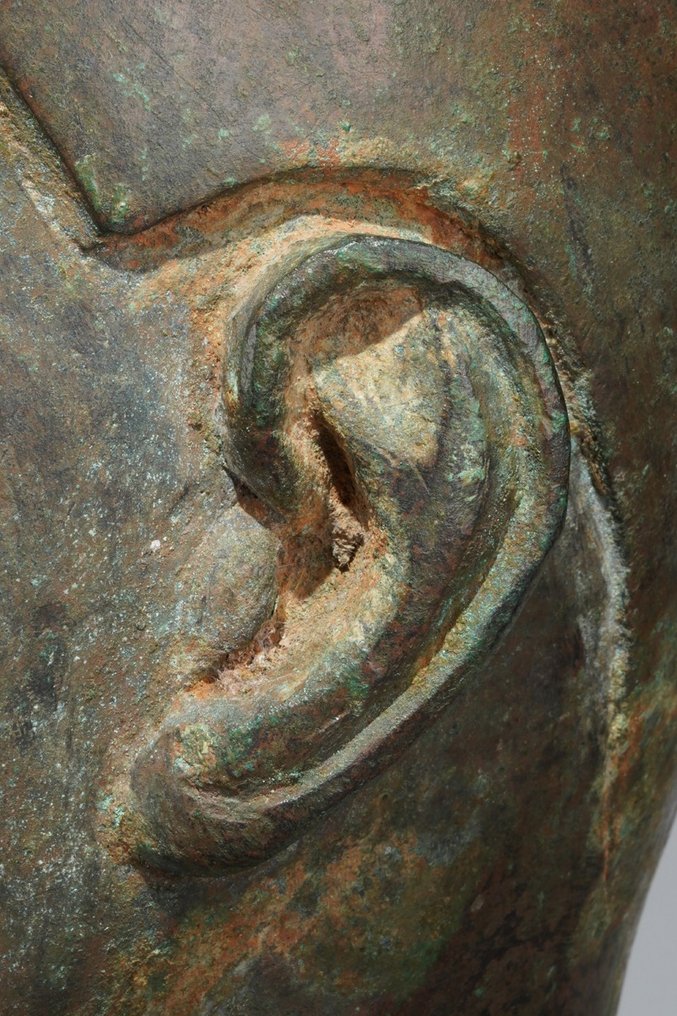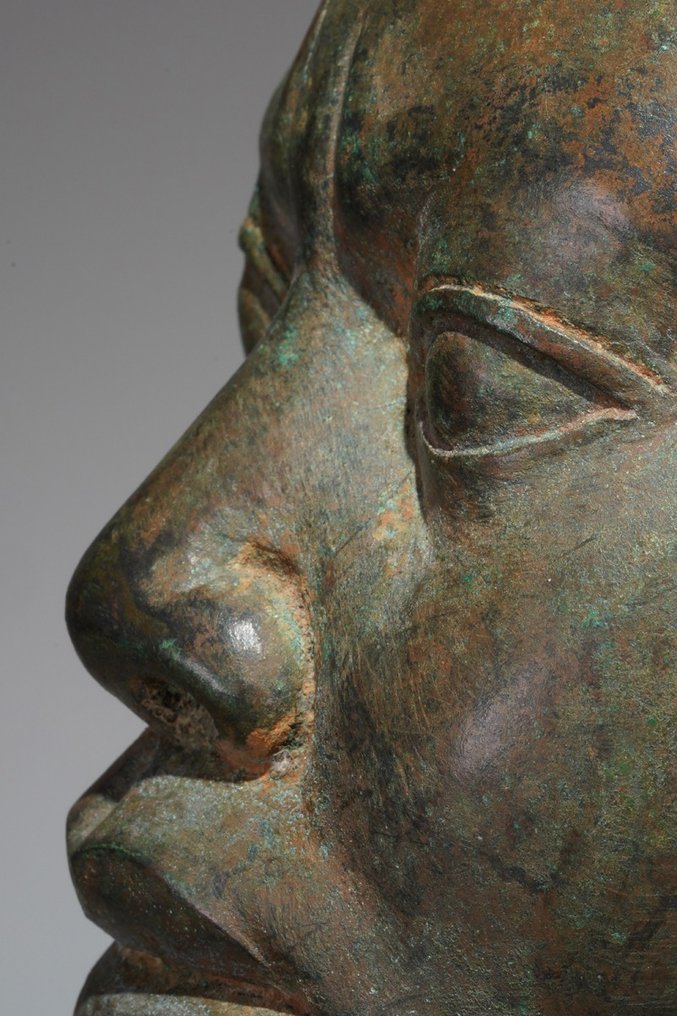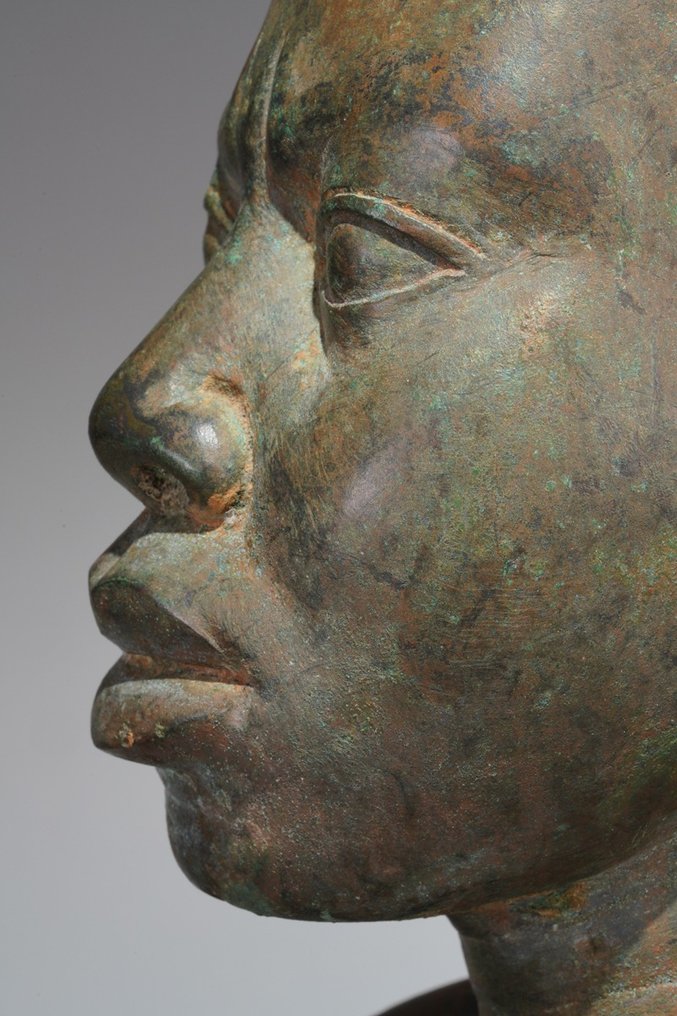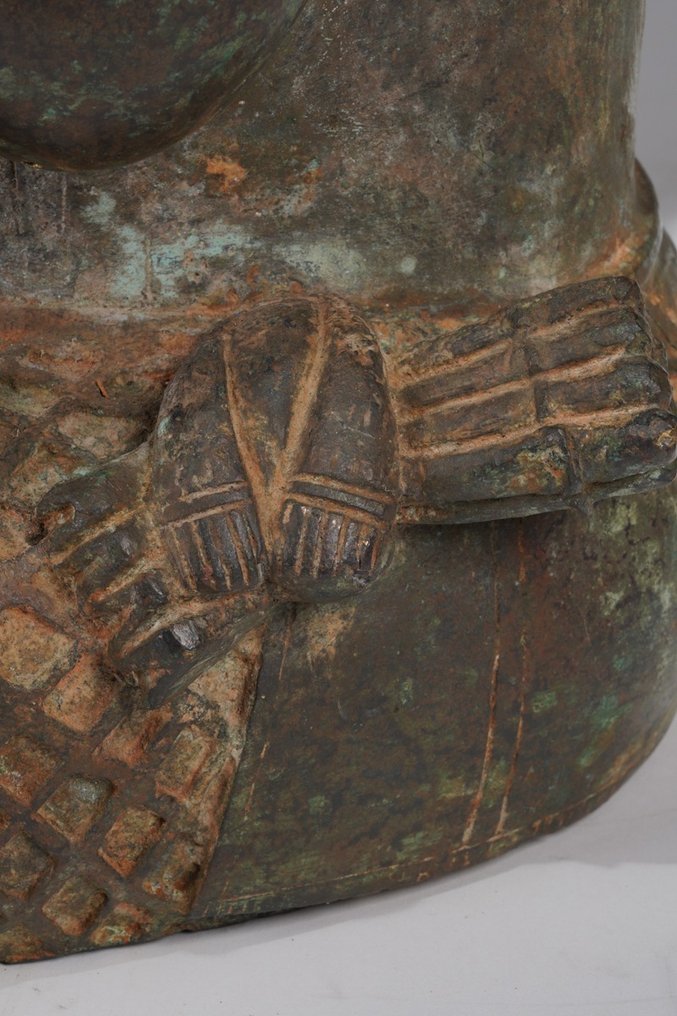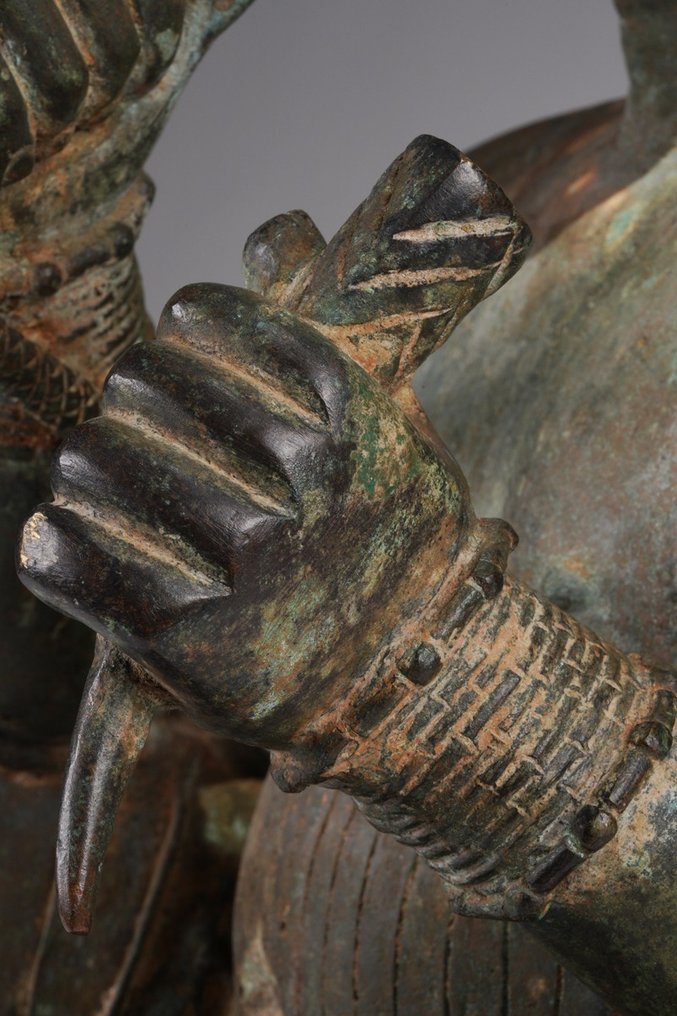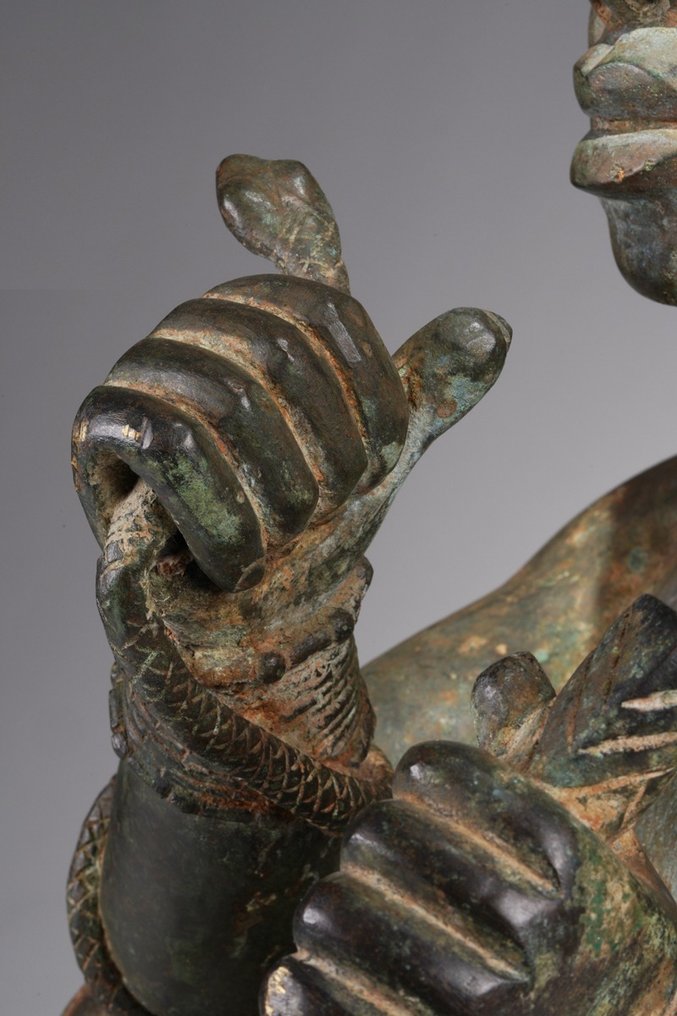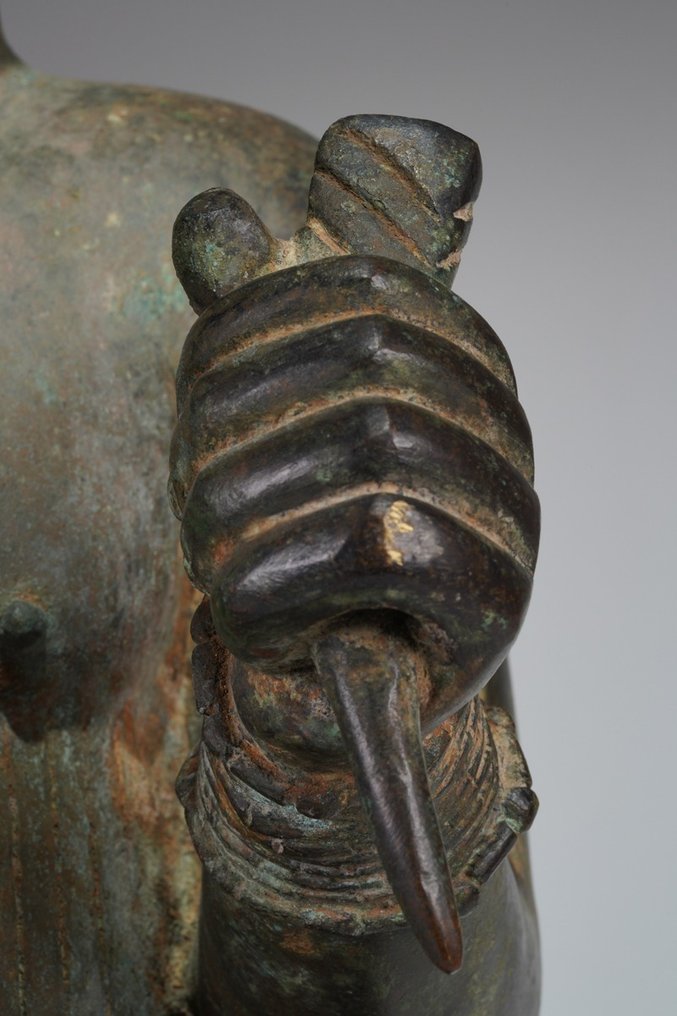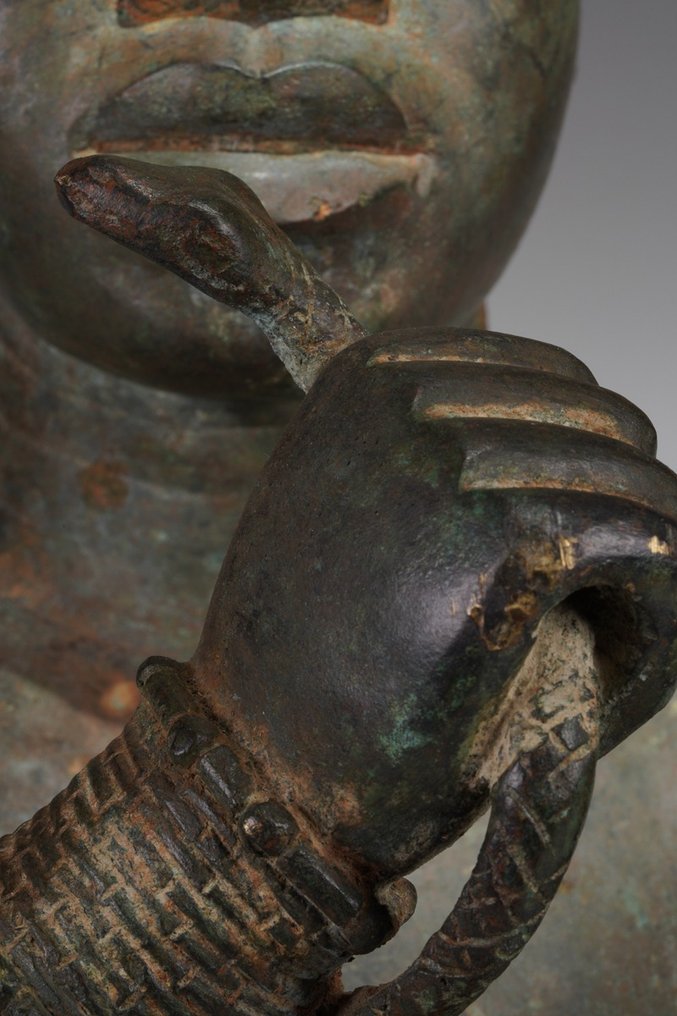wolfgang-jaenicke
A Bronze sculpture in the style of Tada
A Bronze sculpture in the style of Tada
Couldn't load pickup availability
A Bronze sculpture in the style of Tada with an extremely smoozh patina. The related famous exemplare was obviously deliberately destroyed, which is probably due to the influence of militant Islamism, which has now found its continuation in the reign of terror of Boko Haram and dominates this region. However, this reign of terror has now stopped destroying high-quality works of art and instead sold them to the art trade because they can fetch a considerable amount of money. Even though this sculpture was in a well-known collection in Togo for many years, it is likely that it is closely linked to the decline of animism and the aggressive advance of intolerant Islamism. The condition of the surface suggests that it was in ritual use - like mentioned above - for many years; provenance Heritage El Hadji Ibrahim Ousmane, Cotonou, who passed away 2022

El Hadji Ibrahim Ousmane, about 2020
Tom Phillips wrote in his book "Africa, the Art of a Continent" page 407, about the well-known version of this famous sculpture, which is obviously Ife related.
"This is without doubt the supreme masterpiece of the Ife smiths´art. Its proportions are naturalistic, whereas normally a quarter or more of the height of the figure. The limbs and usually the torso are generally no more than cylinders, but here, the legs and remaining parts of the arms are very Ifelike. The figure wears a wrapper that is overlain with a net of beads. On the left hip, a sash is tied around a folded cloth, perhaps the concerns of the wrappers. (There is a similar hip ornament in terracotta form a life-size figure from the Iwinrin Grove). Originally the right foot may have projected below the level of the base, which prompted William Fagg to suggest that it might have been intended to sit on a round stone throne (as cat. 5.66)...
Until recently this piece was kept in a shrine in the Nupe village of Tada on the river Niger 192 km north of Ife, where the villagers took it down the river every Friday and scrubbed it with river gravel to ensure the fertility of their wives and of the fish on which they live.. This accounts for its smoothed appearance, Bernard Faggpersuaded the villagers that they were destroying the sculpture and with it the fertility they were trying to promote...
It is not clear why this piece and several others were found so far north. It may well be that its location indicates the ancient northern frontier of the kingdom of Ife. FW, Bibliography: Willet, 1967, pl 8
s. Tom Phillips, Africa Art, the Art of a Continent, page 407
Youtube video clip: Ife Tada Benin Djenne Adamaua Terracotta and Bronzes Wolfgang Jaenicke Gallery Berlin.
Height: 57 cm
Weight: 27 kg
